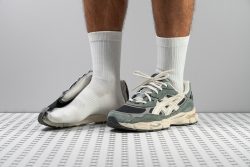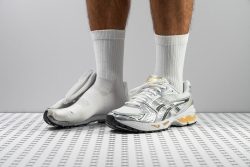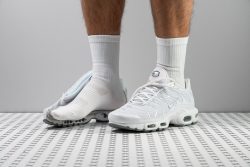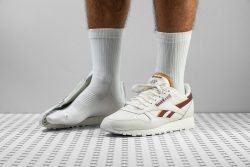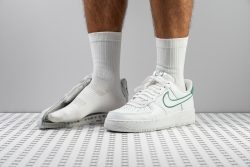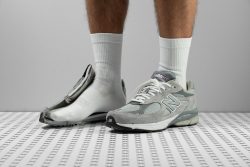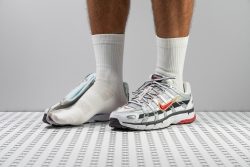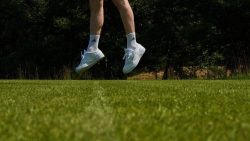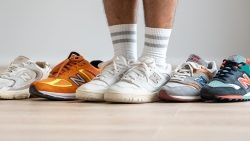7 Best Sneakers For Flat Feet in 2025
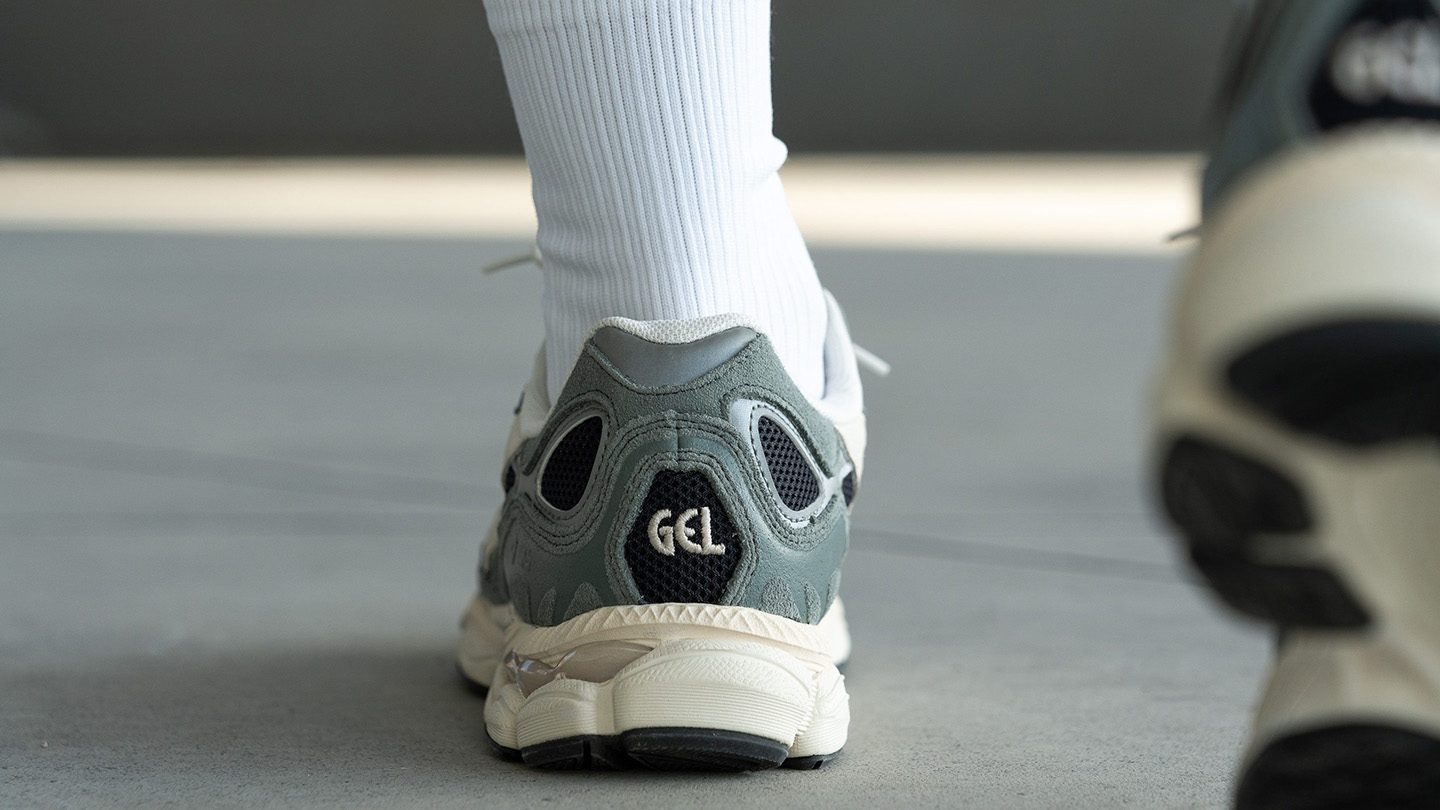
We buy shoes ourselves. We earn commissions when you buy through us, at no extra cost. Why trust us
Flat feet may cause discomfort or even pain while walking and standing for longer periods. Some sneaker features may help with this. In this guide, we cover them all and explain in great detail how and why they work. If you're in a hurry, we highlighted here the best picks that really stole the show in different categories.
Keep in mind that footwear can't fix or heal your arches. We always recommend visiting a specialist if you're experiencing pain, premature muscle fatigue, or anything out of the ordinary.
How we test sneakers for flat feet
We test all the sneakers that enter our lab in the same way. Our tests are standardized and this, next to buying the sneakers with our own money, allows us to be unbiased. Every sneaker is treated the same. Just because canvas is less durable than leather, we don't apply less force when testing its durability!
We use different machines and tools to test the sneakers, from a smoke machine and different 3D-printed casts that direct the smoke into the toebox, to calipers, durometers, tire tread gauges, and so on. This scientific approach results in 20+ data points on each sneaker! This makes sneakers easy to compare to the averages and to each other. We also always add details from our field tests, and it's great to see how lab data stacks up against personal experience!
Best sneakers for flat feet overall
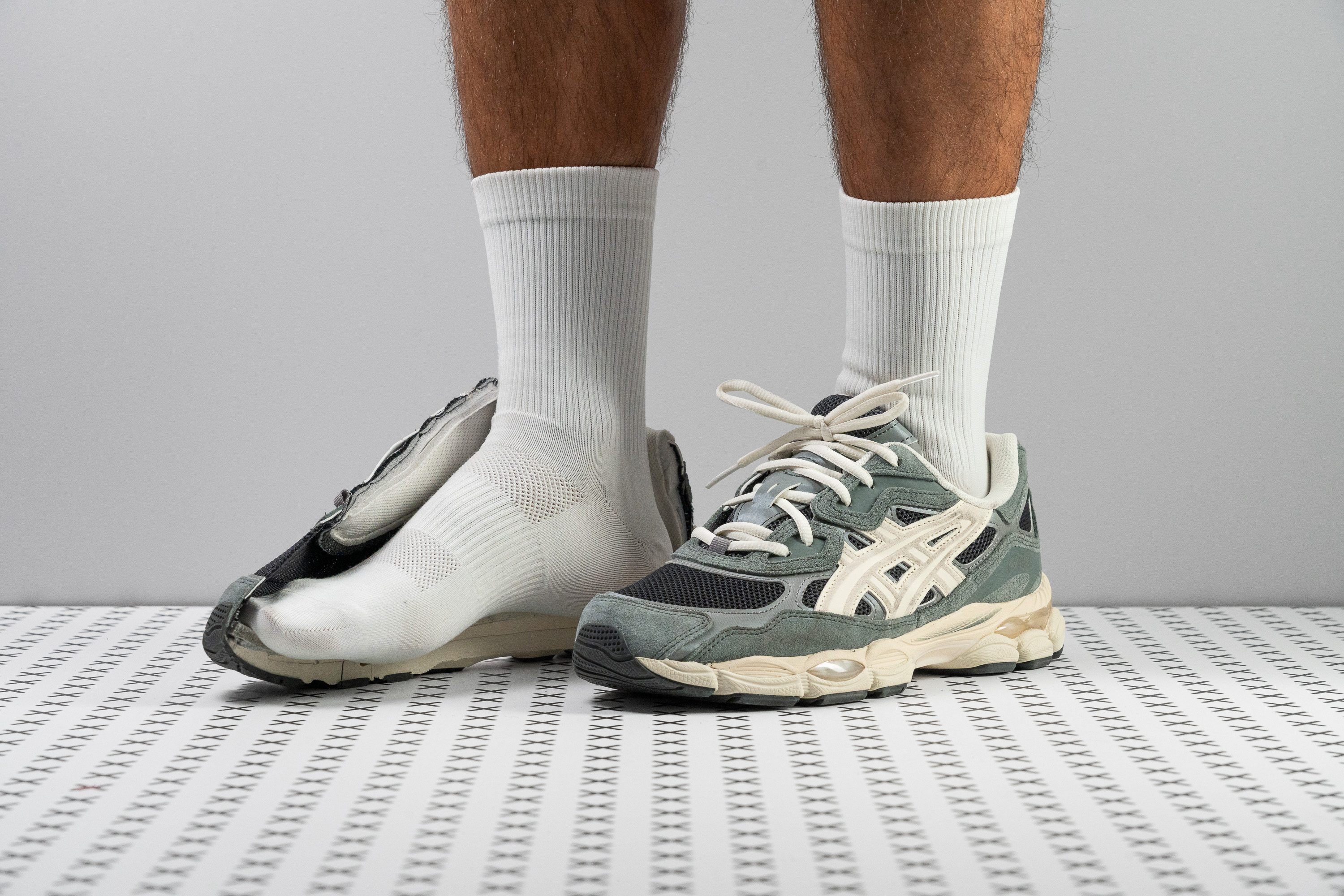

























































What makes it the best?
No questions asked, the ASICS Gel NYC delivered steady and dependable support, keeping us secure every step of the way. In addition to wear tests, further testing in the lab validates its dependable structure through its firm, wide, and rigid base. It easily leads the pack as the top flat-feet sneaker.
The platform offers both comfort and confidence. Our durometer shows a high reading of 37.0 HA, meaning the foam is 27.1% firmer, and therefore more stable than average. The midsole offers a welcome touch of softness through its Gel technology in the heel that effectively dampens impact.
The upper consists of genuine suede and leather that keep our feet centered. The rigid materials and the chunky base stiffen the shoe’s construction so that it resists ankle twists. True enough, we rated it with a high 4/5 torsional rigidity score in the lab. The heel counter also received the same stiffness score, holding us steadily in place.
The wide base also delivers a well-planted sensation. Measuring 114.6/91.6 mm, it’s hard to lose balance and spill over the shoe compared to the 108.5/83.6 mm average platform for sneakers.
Unfortunately, Gel NYC failed to impress us in our durability tests. For those seeking daily beaters, this sneaker is not it.
Pros
- Incredibly breathable
- Very comfortable
- Supportive and stable
- Features GEL techonology
- Fits true to size
- Feels light on foot
- Great mix of style and function
- Super trendy retro runner vibes
- Excellent grip even on wet
Cons
- Not durable
- Not for running
Sneakers for flat feet with the best breathability
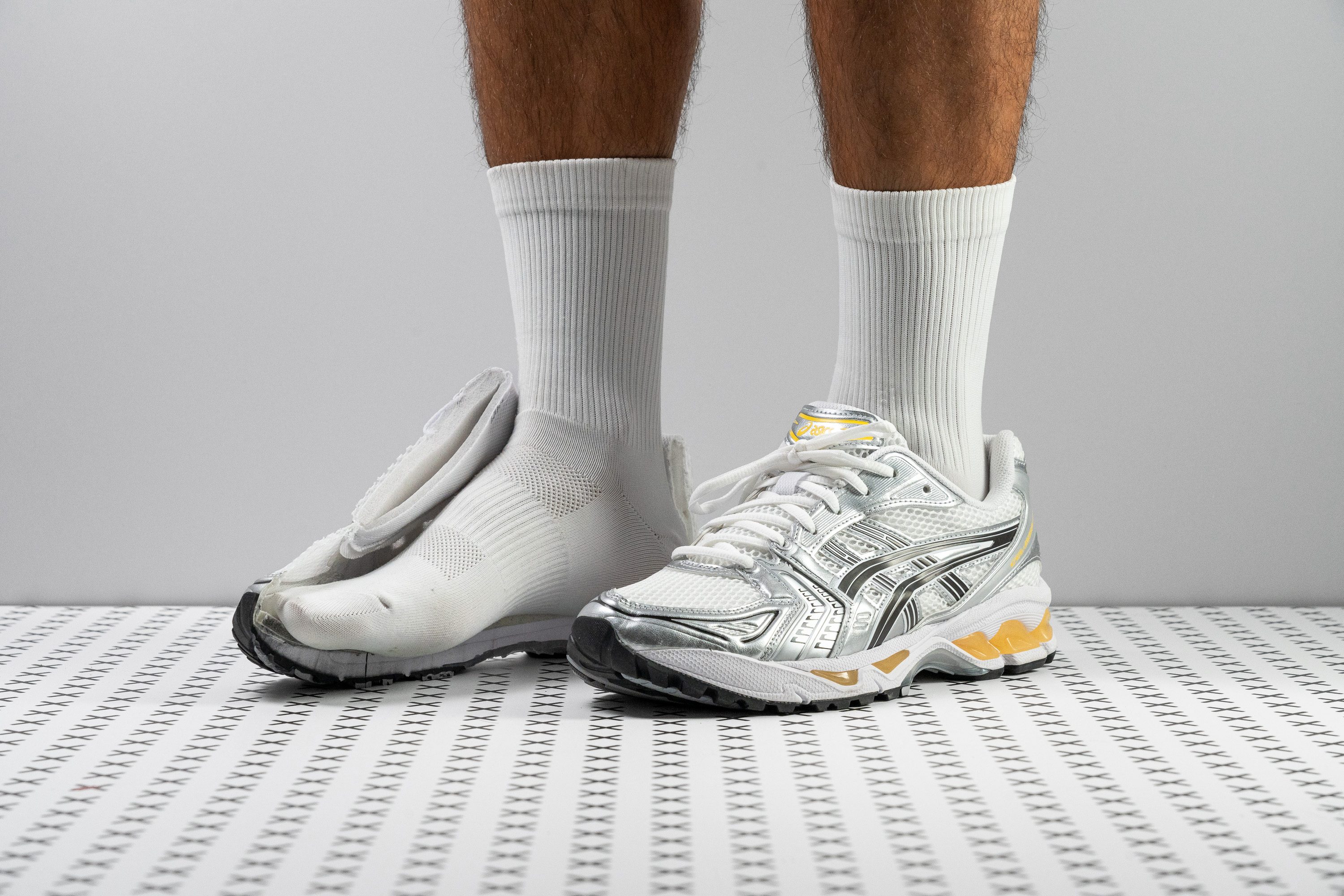























































What makes it the best?
The ASICS Gel Kayano 14 offers all-around premium comfort through its Gel cushioning, flexible midsole, and well-ventilated upper. Among flat-feet sneakers, our lab tests prove it’s the best breathable option. All wrapped in a lightweight package, we’re amazed at the undeniably secure footing it offers.
We instantly enjoyed maximum airflow during our wear tests. Under our microscope, we saw countless ventilation holes, which explains why smoke escaped freely in our test, earning it the highest 5/5 breathability score.
Beneath our feet lies a balanced 30.0 HA midsole, which helps secure our steps together with its wide 113.3/88.2 mm base. We felt stable with this extra room and enjoyed walking without having to consciously center our footing. To boost comfort and soften landings, we found a plush 25.0 HA Gel cushioning in the heel.
Despite its width, Gel Kayano 14 made us feel agile. It weighs only 12.4 oz (352g), 9.7% below average, avoiding early fatigue. Meanwhile, it shows minimal resistance to bending as it emerged slightly more flexible than average.
To our dismay, our Dremel ripped through the upper. Those who want breathability, but not at the expense of durability, should search for another pair.
Pros
- Very stable overall
- Comfortable for all-day use
- Incredibly breathable
- Pretty lightweight
- Great lockdown feel
- Features Gel technology cushioning
- Retro-futuristic style
- Trendy Y2K vibes
- Great grip on wet and dry surfaces
Cons
- Not the most durable
- Not affordable
Sneakers for flat feet with the best support
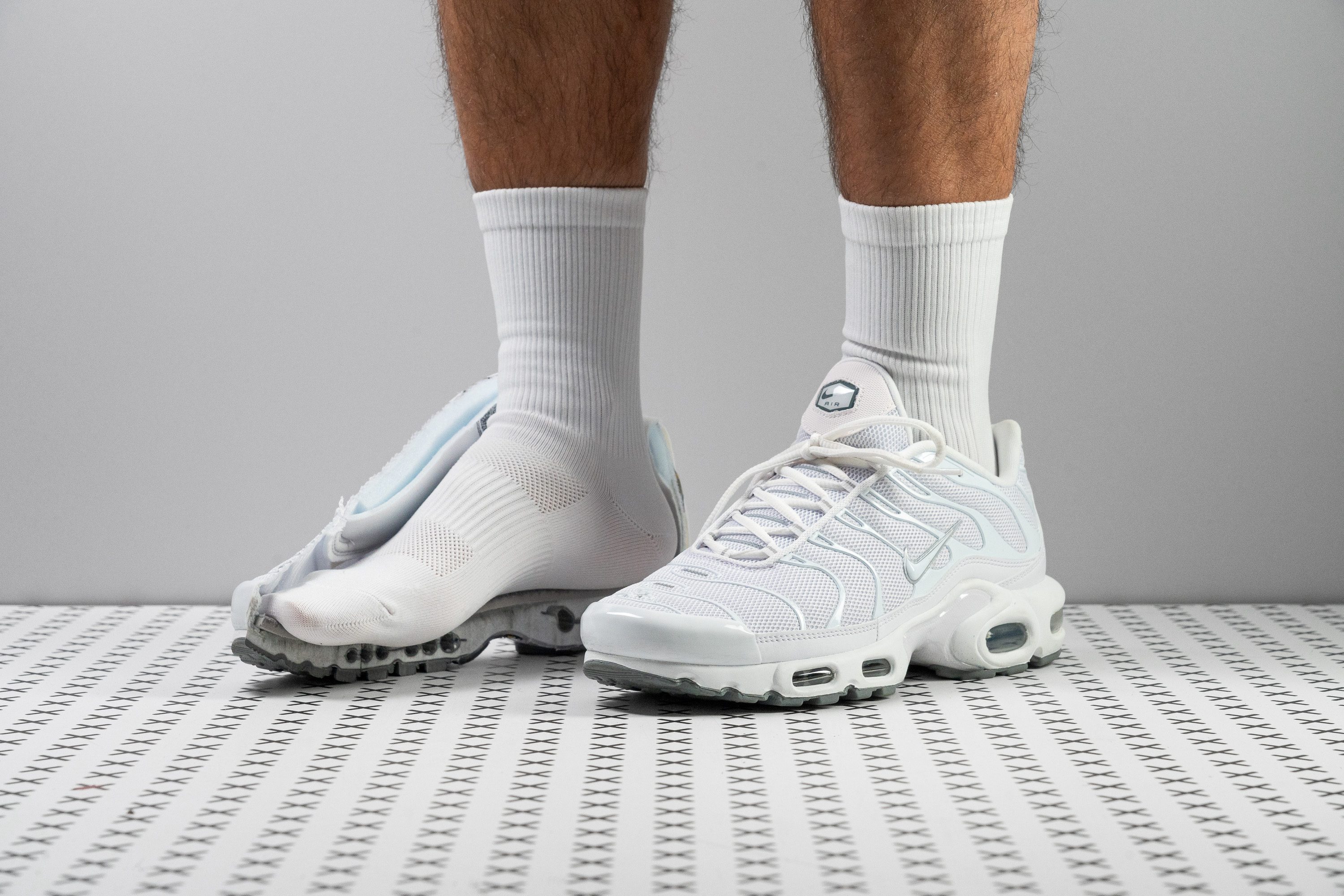








































What makes it the best?
The Nike Air Max Plus is built like a fortress with its rock-solid stability. It’s plush and cushy underneath, yet has a very stiff structure and a grippy outsole that plants us firmly. Our feet instantly recognized it, yet further lab tests validate that it undeniably offers the best support among flat-foot sneakers.
It’s not just for design, the ribcage-like portion adds structure to the shoe. The midsole includes a TPU arch that stabilizes our steps. We tried to twist the shoe with our hands, and it didn’t budge, so we rated it with the maximum 5/5 torsional rigidity score.
The AM Plus takes cushioning to the next level, rising to a massive 39.8/28.1 mm vs. the 30.2/19.2 mm average sneaker. Our durometer shows the foam is a plush 20.0 HA, but it actually feels softer than the reading suggests because of the massive Air units. No pavement feels harsh since the midsole completely erases the ground feel.
As a former performance running shoe, AM Plus carries its robust outsole to its casual version. Its waffle pattern offered reliable grip and control, while its minimal 0.7 mm dent in our Dremel test proves it’s capable of daily wear.
However, its sturdy build can feel unforgiving at first, so we recommend allowing some break-in time for optimal comfort.
Pros
- Supreme comfort
- Lively and responsive ride
- Supportive whale tail TPU arch
- Durable outsole
- Great traction
- An incredible choice of colorways
- Reflective details
Cons
- Toebox lacks durability
- Requires a break-in period
Best classic sneakers for flat feet
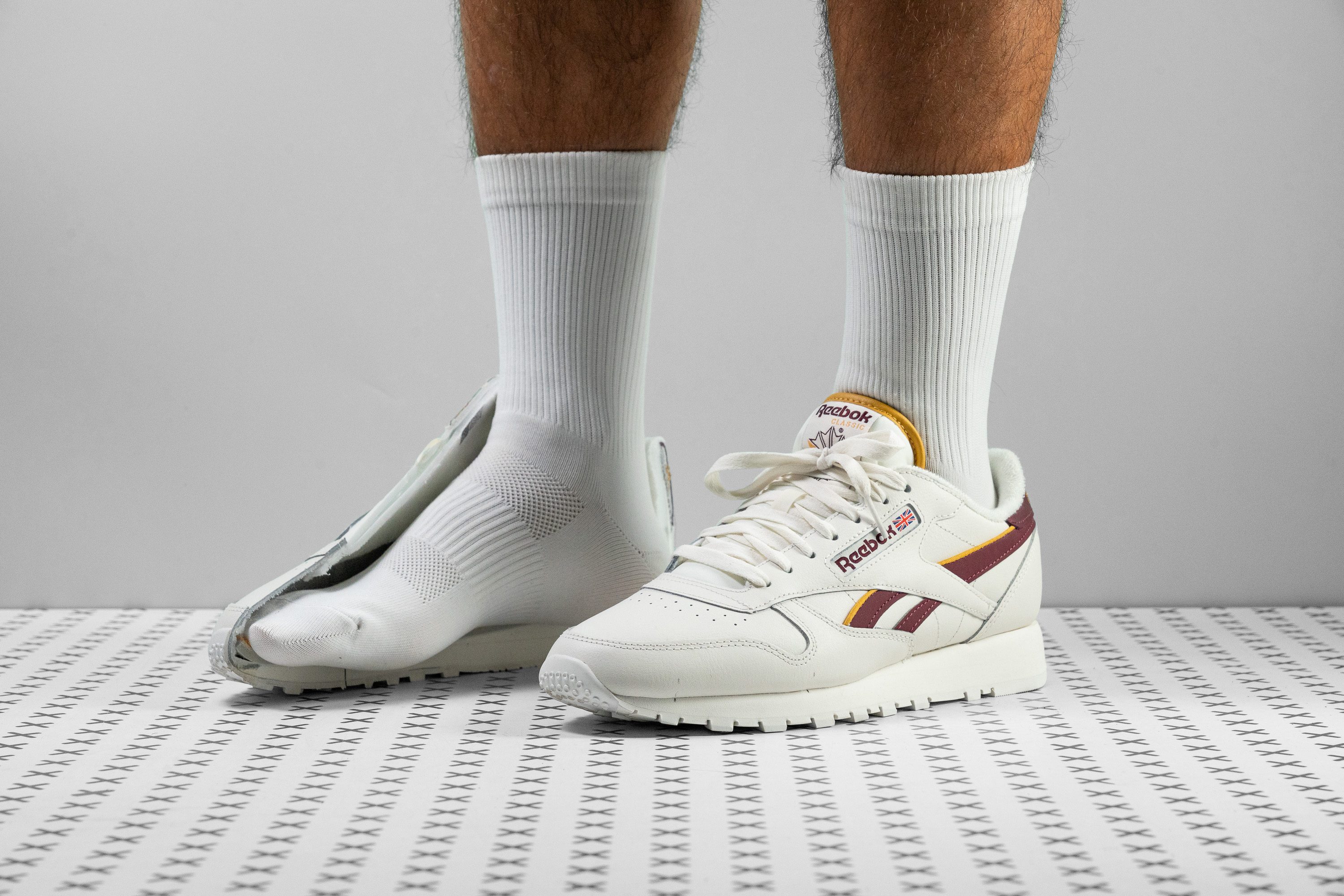







































What makes it the best?
Besides its iconic and easy-to-match aesthetic, the Reebok Classic Leather was a treat to our feet, providing a sturdy construction in a lightweight package. Our lab tests validate its generous yet stable platform. Already in its name, it’s our best classic sneaker for flat feet.
This sneaker is a part of the Reebok Classic collection and was previously a running shoe. Its sporty roots are undeniable when we measured a well-cushioned 35.7/22.1 mm stack that offers good impact protection. Using our durometer, we confirmed its firmness with a 35.1 HA reading, 20.6% above average, and enhancing a well-planted sensation.
Because of its leather material, this shoe has very little give. We validated this in our manual assessment when we found it tough to twist the shoe and pinch the heel counter. We awarded both with a high 4/5 rigidity score, which translates to a secure foothold in our walks.
Thankfully, its weight was not a burden! At only 11.4 oz (323g), it managed to be 17.2% lighter than average. We attribute this feature to its streamlined build, which is why we can’t recommend this pair to sneakerheads with wide feet or bunions.
Pros
- Mighty plush
- Great investment
- Leader of the pack
- Supportive
- Aesthetically well-rounded
- Enduring
- Affordable
Cons
- Downgraded upper
- Dirt-magnet
Best leather sneakers for flat feet
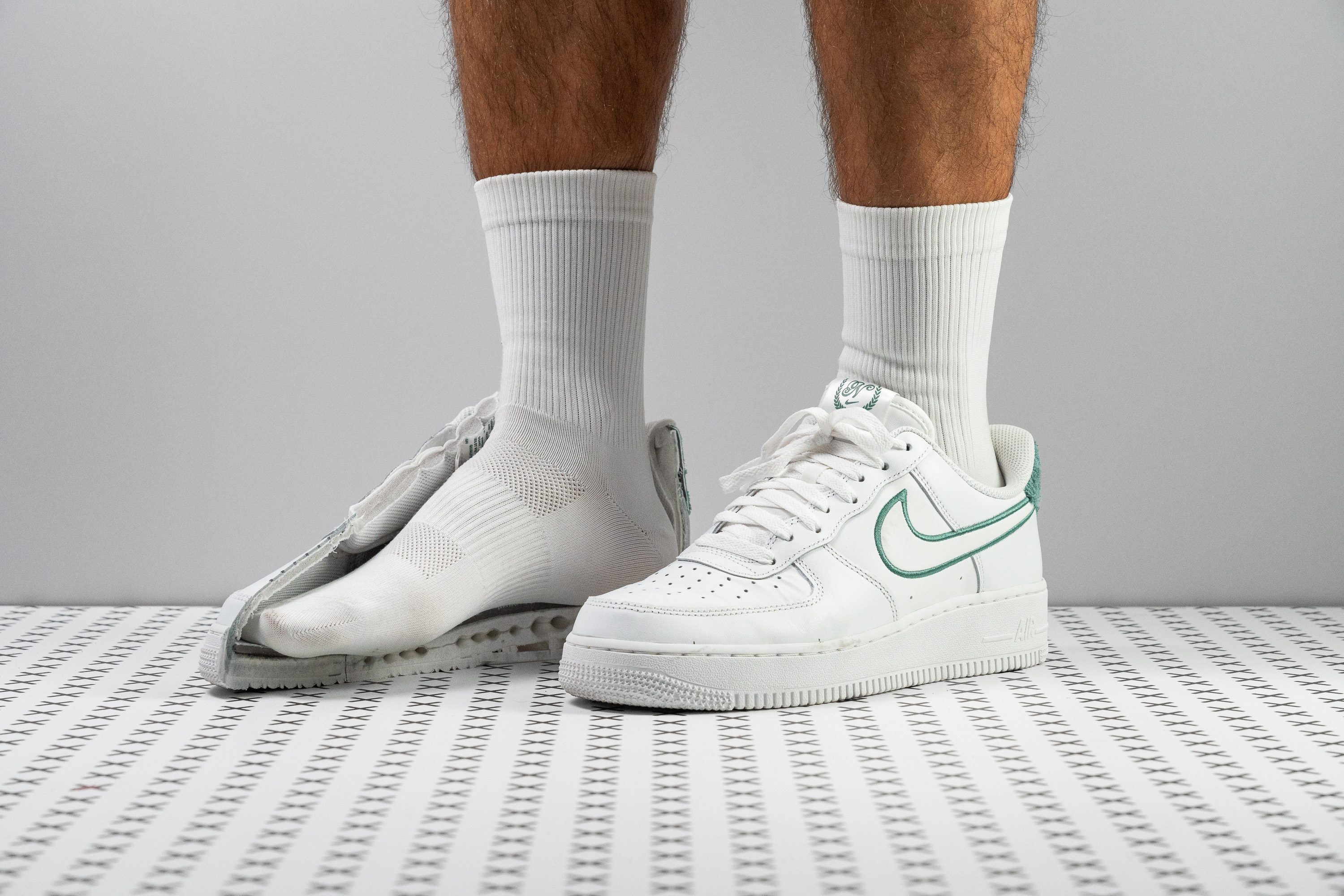
























































What makes it the best?
The Nike Air Force 1 07 LV8 elevated our style and walks with its basketball heritage—from its looks to its stable feel and cushioned ride. Our lab tests show it features a full-length Air Unit that softens the ride, while its upper material adds structure to the shoe. Because of all these and more, this is our best leather sneaker for flat feet.
The leather offers a clean, classic look that’s easy to style. It holds our feet firmly and has very little give to excessive lateral movements. When we tried to twist the shoe and pinch the heel counter manually, we couldn’t award it anything lower than the maximum 5/5 rigidity rating. It feels impossible to topple over in this shoe!
The LV8 has a generous 36.7 mm heel that protects us from the ground, while the full-length Air unit makes each step feel more comfortable. Our durometer shows the cushion is a softer-than-average 26.5 HA.
Surprisingly, this sneaker offers some airflow despite its leather material. In our smoke test, a thin wisp of smoke flowed out of the toebox ventilation holes, so we rated it with a 3/5 breathability score. That’s impressive for leather shoes!
Unfortunately, we had to deal with a long break-in period because of its highly rigid feel. Those seeking comfort straight out of the box won’t find that here.
Pros
- Great Air cushioning and impact protection
- Super trendy and stylish
- Fire basketball aesthetics
- Materials feel high quality
- Nice support and lockdown
- Good outsole grip
- Timeless design
- Makes you taller
Cons
- Not for wide feet
- Heavier than other Air Force 1s
- Break-in period
Best dad shoes for flat feet
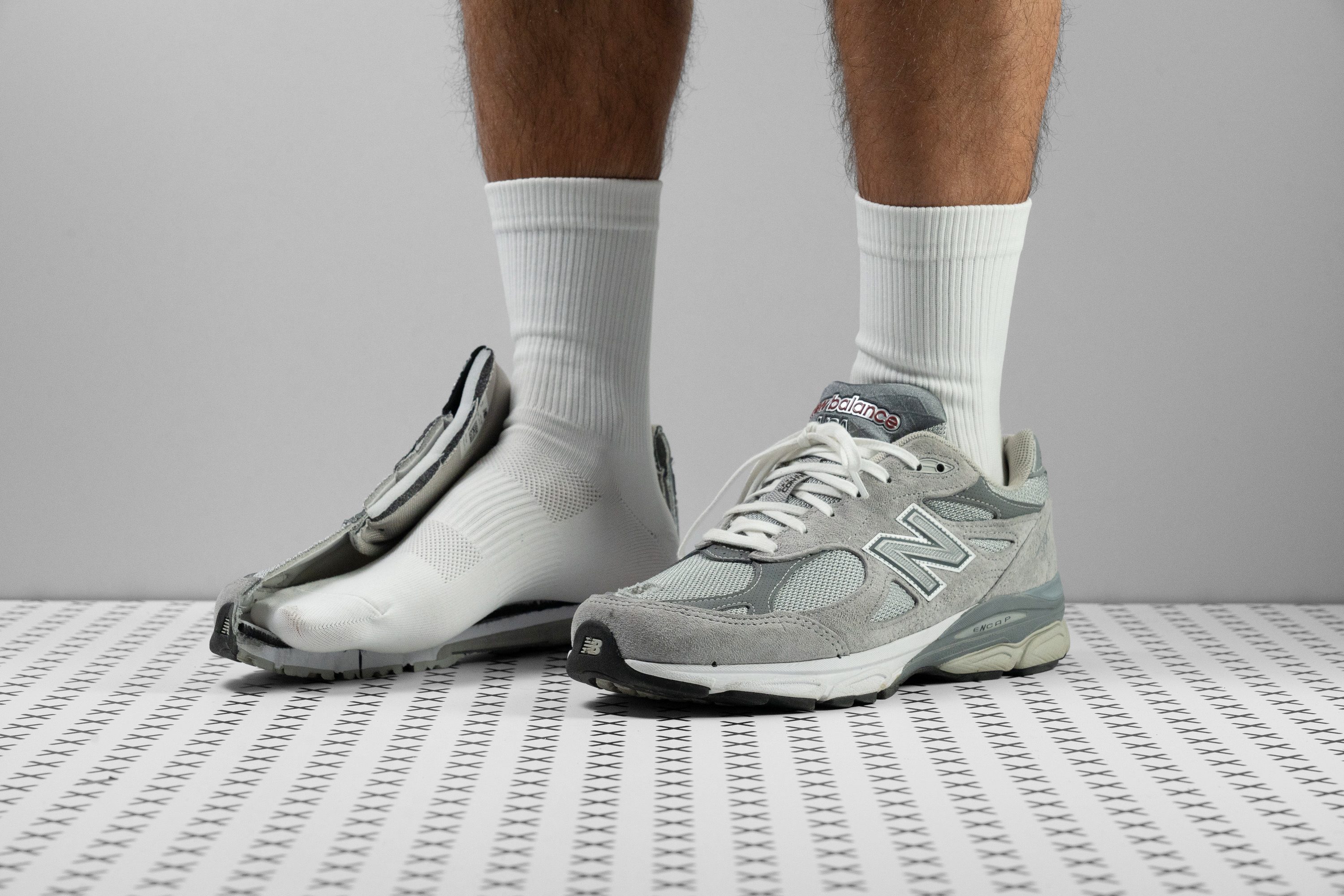















































What makes it the best?
The New Balance 990 v3 looks like it came from a decades-old closet with its retro look and offers exceptional support and breathability in our walks. Digging deeper into the lab, we found it includes technologies from previous running shoes, such as the ENCAP, to deliver arch support. Among flat-feet sneakers, it’s our best dad shoe.
The cushioning feels well-balanced, offering a good mix of impact protection and ground feel with its 32.2/22.3 mm stack. Our durometer shows the foam is a firmer-than-average 31.4 HA to boost our surefootedness without any discomfort.
The platform feels stiff and steady thanks to the ENCAP technology, which includes a chassis that helps us land and toe off safely. It’s not easy to lose balance in this shoe, evidenced by its high 4/5 torsional rigidity rating in our manual twist test.
The sneaker features real suede, as indicated by its reaction to our torch test. The upper also offered lots of ventilation, boosting comfort for prolonged wear and hot weather. In our lab, the smoke we pumped into the shoe flowed out easily (5/5), which explains the maximum breathability we felt.
Unfortunately, this dad shoe weighs a heavy 14.5 oz (410g). Those who don’t like the burden of a bulky shoe should try other options.
Pros
- Premium materials (real suede)
- Crafted in the USA
- Extra tough, hard-wearing outsole
- Supports all-day wear
- Very stable platform
- Excellent arch support
- Extra padded interiors
- True to size and fit
- Reflective elements
Cons
- Frail toebox mesh
- Heavier than average
Sneakers for flat feet with the best shock absorption
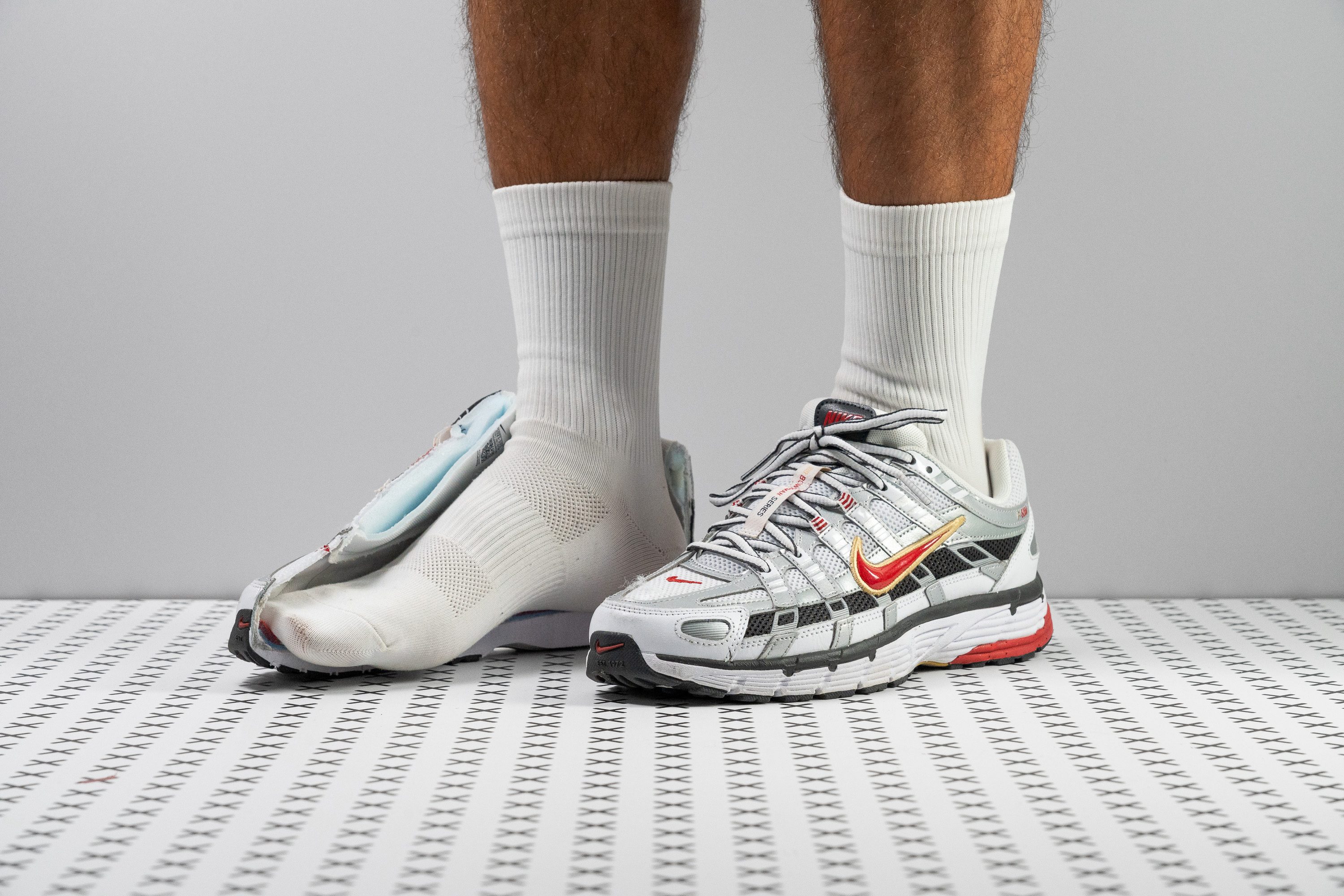





















































What makes it the best?
The Nike P-600 offers a fresh take on flat-feet sneakers, offering the best shock absorption during our walks around town. Besides its airy build, our lab results show its comfort-focused ride through its flexible midsole and strain-reducing foam. And, it does so without compromising support.
Our feet were spoiled with its plush and protective cushion. Testing for its shock absorption, we recorded a high 111 SA, 27.6% better than average. It was a joy to wear mindlessly all day, with the heel counter holding our feet in place. In our manual assessment, we rated it with a 4/5 stiffness rating, offering just the right amount of pressure to stabilize us.
Our scales validate its featherlight figure at 10.3 oz (292g), 25.3% lighter than average! Its weightless feel is further enhanced by its minimal resistance to bending. In our lab test, it emerged 28.2% more malleable than average, significantly boosting our agility and preventing fatigue.
When we tested the P-6000’s upper, we realized it was in a class of its own. Excelling in both our breathability and durability tests with 5/5 scores—a rare achievement in the lab—it offers both ventilation and reinforcements. However, we recommend wearing thicker socks when wearing this shoe in colder environments.
Pros
- Incredibly comfortable for all day wear
- Amazingly lightweight yet padded
- Soft and flexible yet slightly bouncy ride
- Trendiest Y2K vibes
- Great for summer
- Compliment magnet in any colorway
- Affordable
Cons
- Not the best for winter
- No midsole technologies
Rigid and flexible flat feet: know the difference
When it comes to the arch height, we have 3 types: low or flat arches (flat feet), medium arches, and high arches.
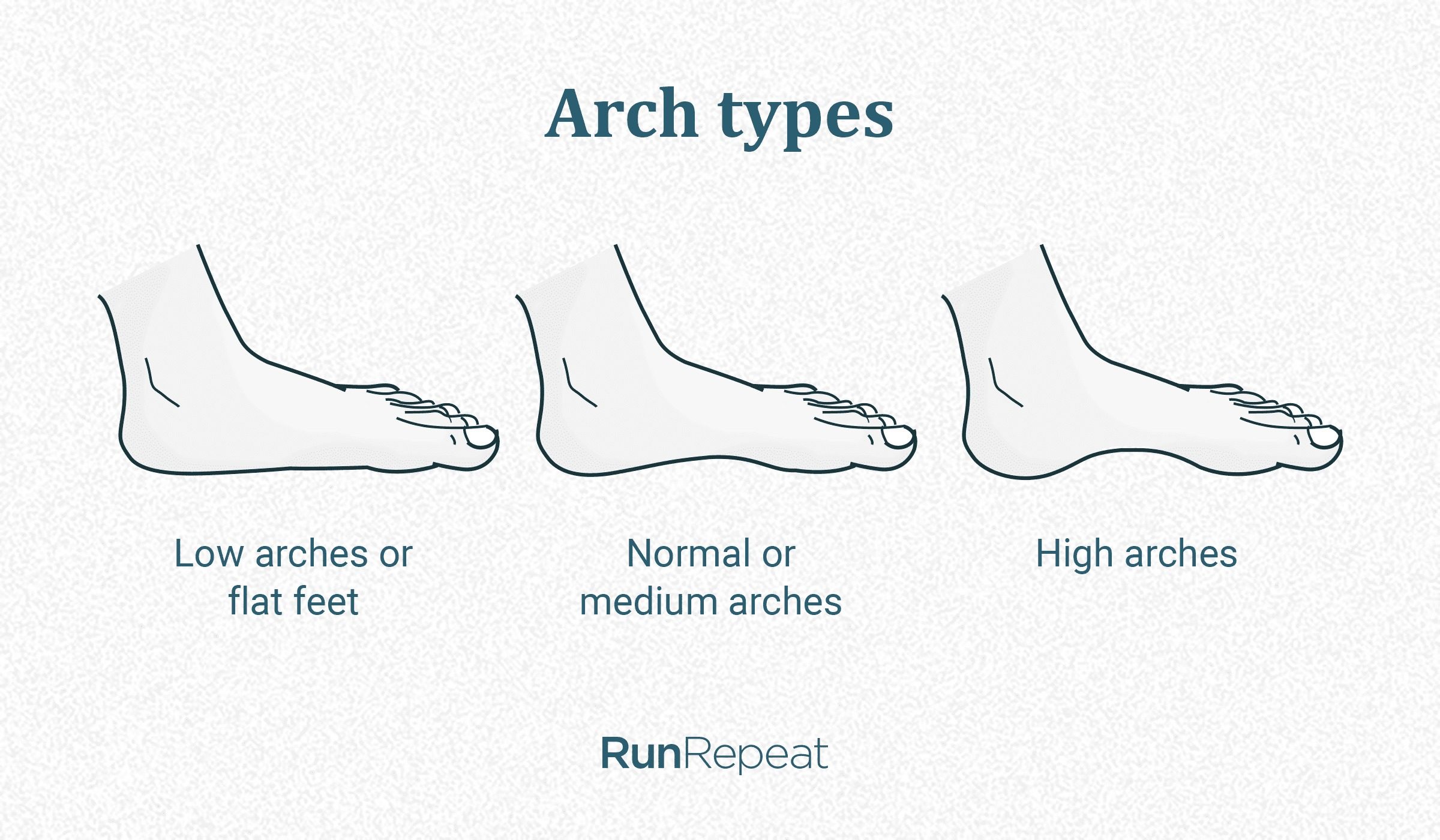
However, people can have rigid flat feet or flexible flat feet. Here’s how they are different:
- In rigid flat feet, the arch is never visible; it’s always flat. In flexible flat feet, the arch is visible when a person is sitting or lying down, and it disappears once the weight is put on the legs (a person stands up).
- Rigid flat feet can cause pain and may happen in one or both feet.
- Flexible flat feet are usually painless and usually affect both feet.
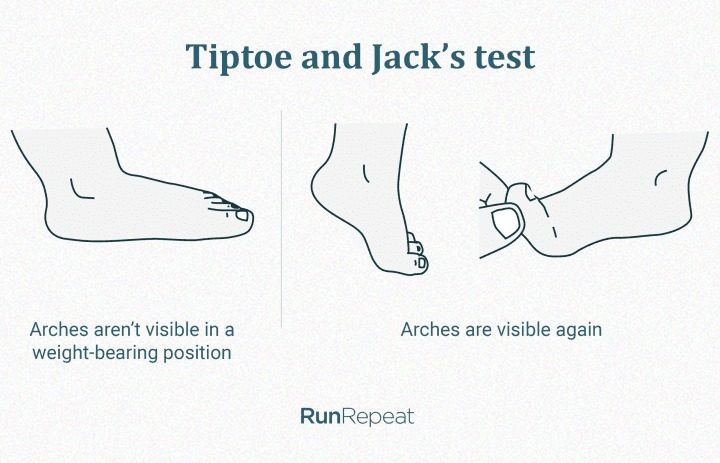
If you’re still not sure, you can do 2 tests to see if you have flexible flat feet:
- Stand on your toes. If arches become visible, you have flexible flat feet.
- Have someone passively dorsiflex your big toe. If your arch appears, you have flexible flat feet.
Why is this important? Because pain should not be overlooked and because rigid flat feet often ask for more attention. If you’re experiencing any discomfort or pain, we recommend seeing a specialist first.
5 features that are good for flat feet
Sneakers for flat feet may be equipped with more than one feature that’s good for flat feet: dual-density midsoles, a base that’s wide and rigid, stiff and padded heel counters, large side walls, and/or structured uppers.
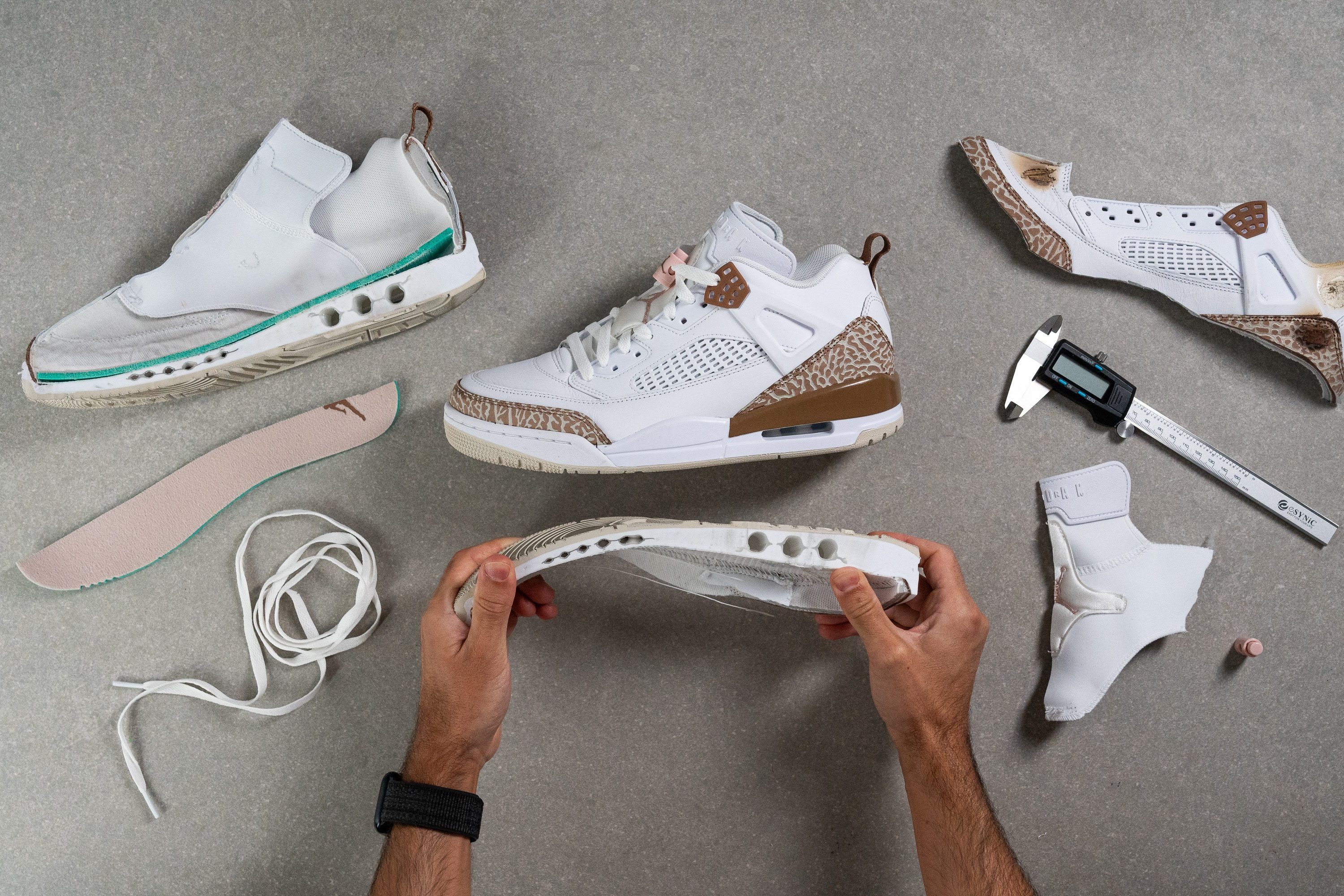
Features you need may be different from what your flat-footed friend is enjoying. This is because having flat feet is not just about the arches but other things like the strength of your Achilles tendons, the heel drop you’re used to, whether you have any other conditions, and so on.
We’ll cover here all the features that may feel good when you have flat feet and why.
1. Dual-density midsole
The midsole below the arch may be firmer, but it’s not an obtrusive bump you may expect when you read “sneakers for flat feet”. Midsoles can be made of different foams and the firmer one is usually placed under the arch and/or on the medial (inner) side of the heel to help with overpronation.
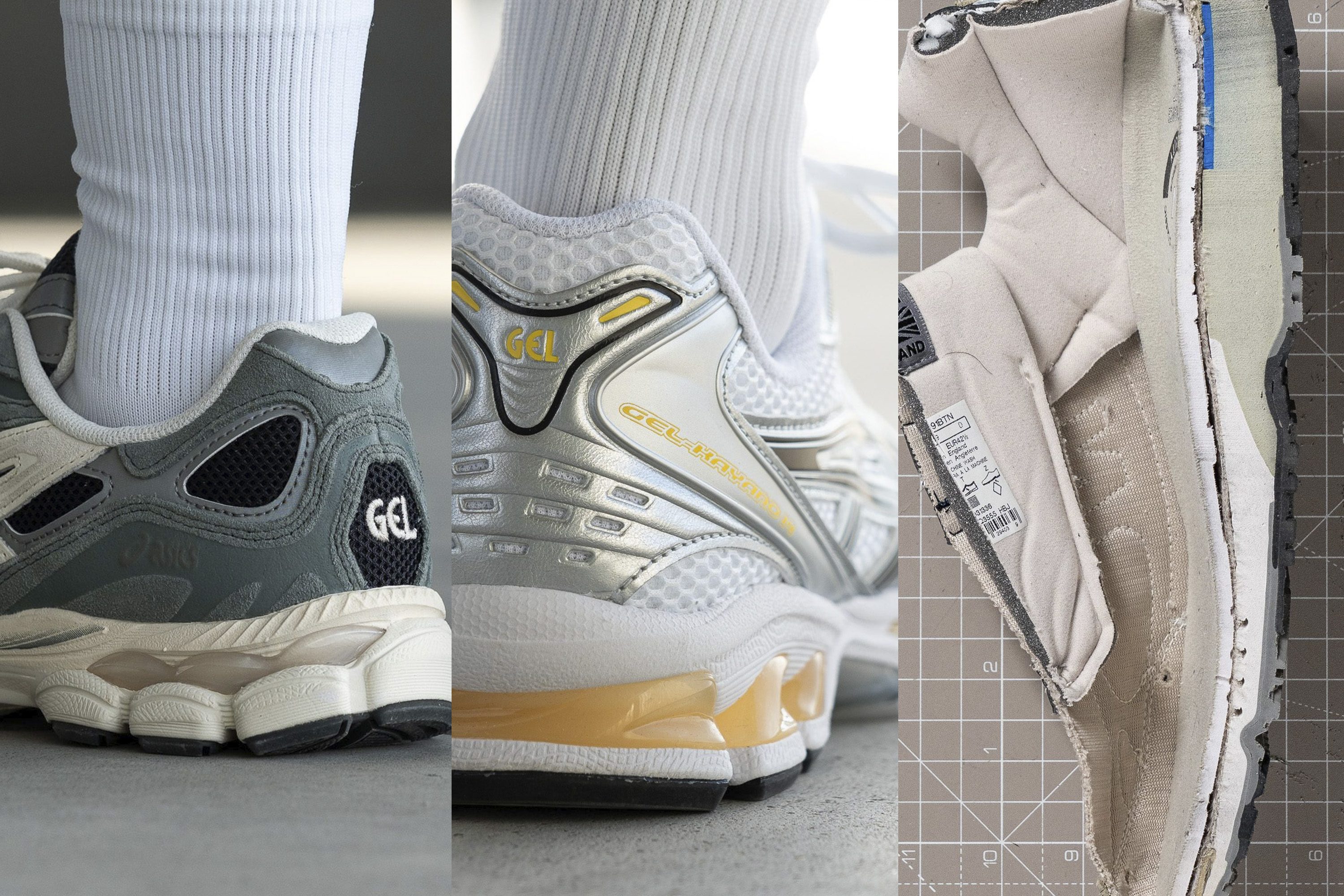
Overall, softer sneakers are more comfortable but they offer less stability. Firmer midsoles are great for that supportive feel and they stabilize the heel.
2. Wide and stiff base
A base that’s tall and narrow can be quite unstable. So we look for a wide base that allows for that planted landing.
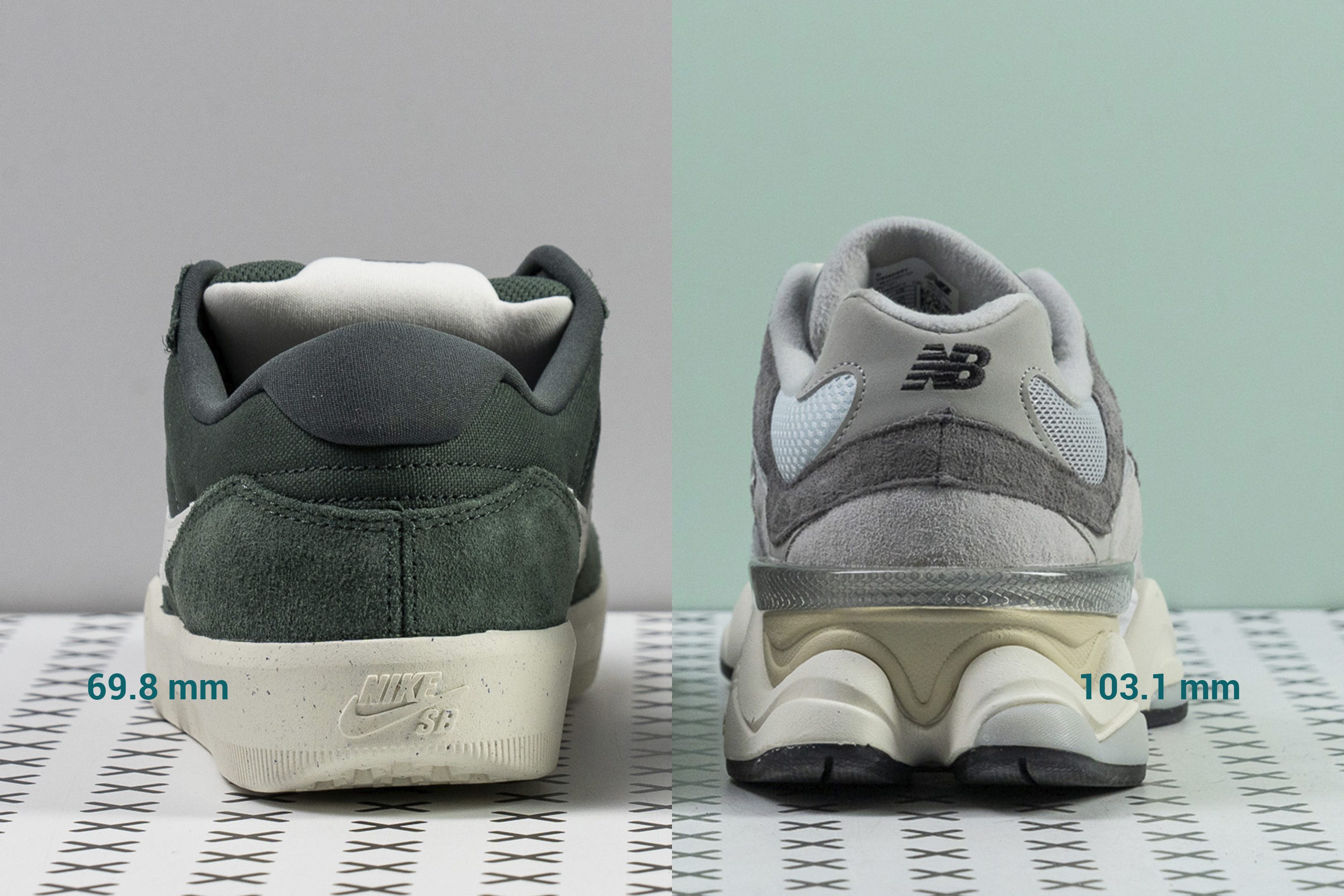
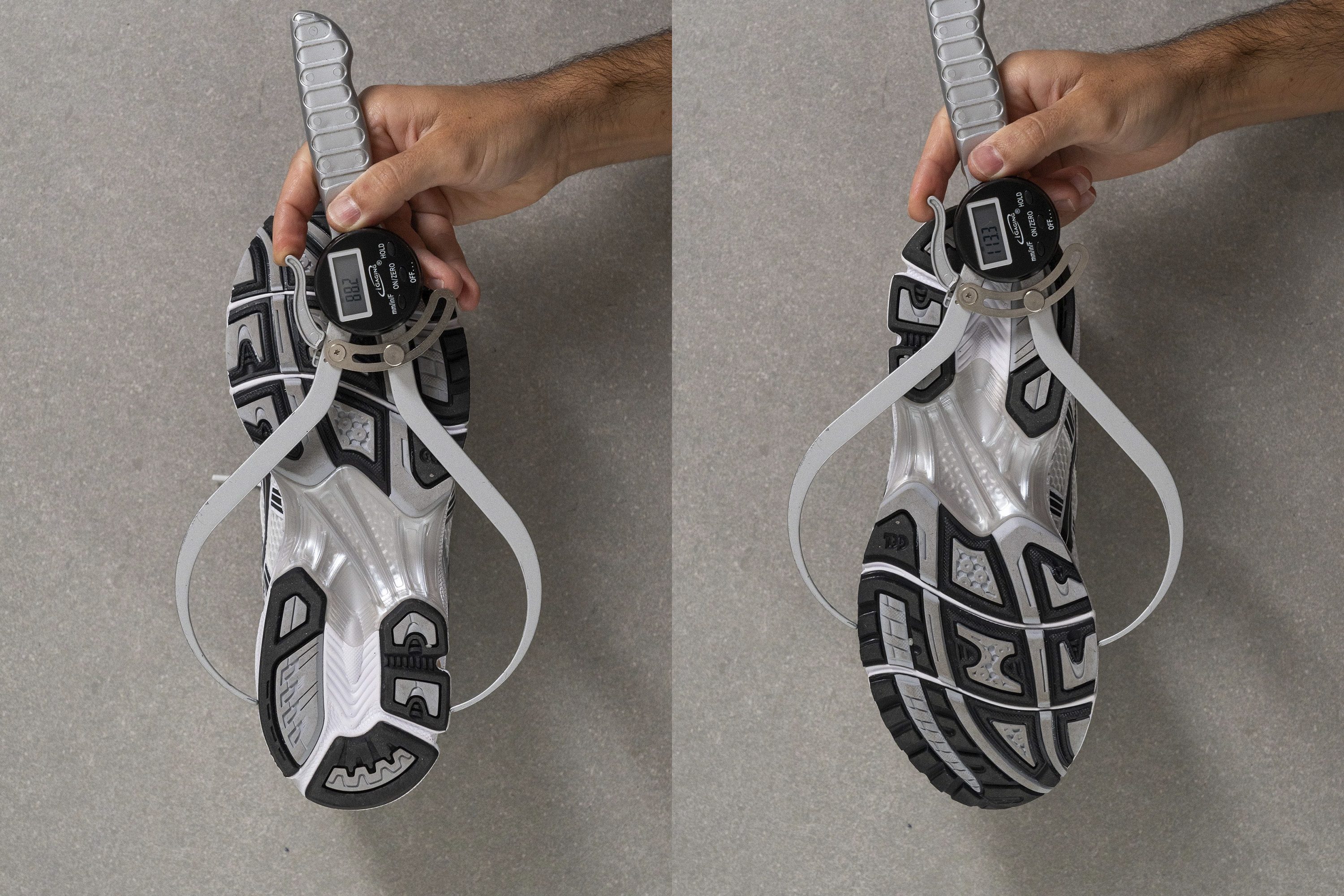
When it comes to the flexibility of the sneaker, we can look at the longitudinal flexibility and torsional rigidity. Longitudinal: can you bend the sneaker? Torsional: can you twist the sneaker? And, for flat feet, torsional rigidity is important. It means the sneaker is more stable and that stability feels good.
This sneaker scored 4/5 on our torsional rigidity test, meaning the platform is rigid (5/5 would be very rigid)
However, some people enjoy longitudinal stiffness as well. This depends on personal preferences. Do you like it when the sneaker bends naturally with your feet? Or do you want something stiffer?
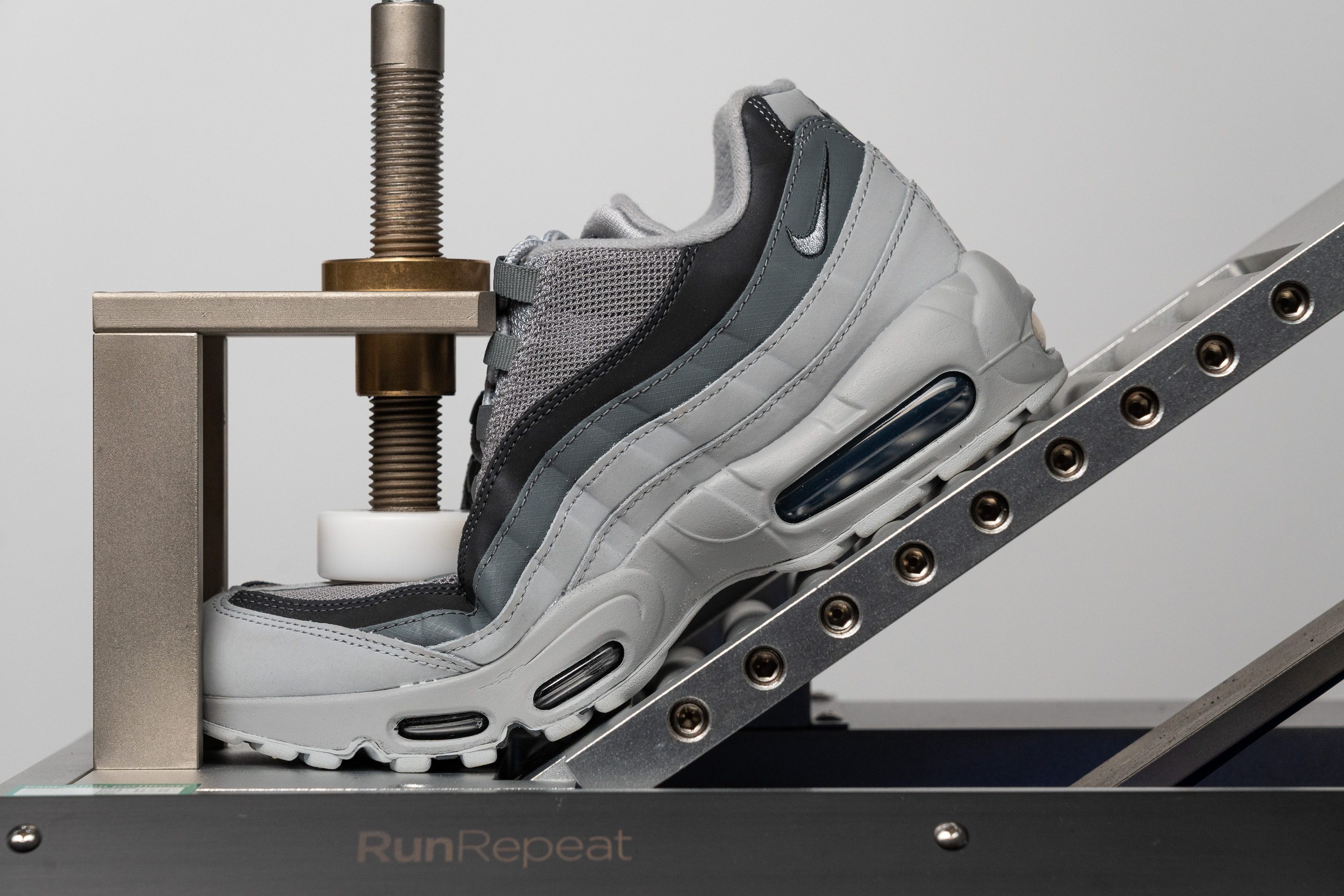
In both torsional rigidity and longitudinal stiffness, higher numbers indicate a more rigid/stiffer sneaker.
3. Stiff and padded heel counters
Heel counters can be very soft and sock-like or quite stiff. For obvious reasons, the stiffer they are, the more padding they usually have. We need some soft material so that the heel counter does not dig into our heels and Achilles tendons.
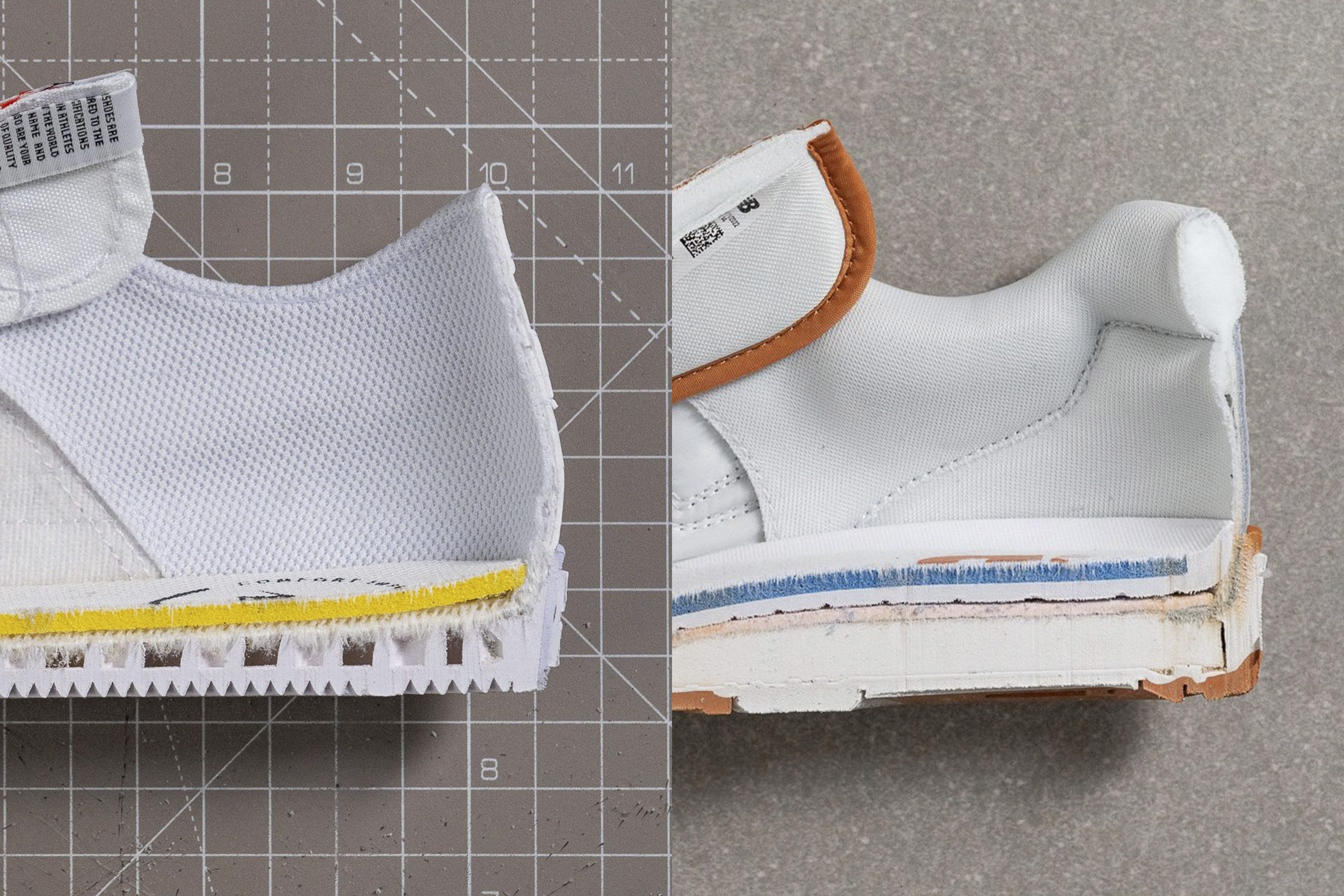
For those with flat feet, we recommend stiffer and padded heel counters. They lock our feet in better and help stabilize the foot overall. This feels great because it prevents the unnecessary micromovements that flat feet might dislike.
This is what a very stiff heel counter looks like. We gave it a 5/5 stiffness rating
A heel counter that scored 1/5 on our test (very flexible)
4. Large side walls
Side walls are usually midsole extensions that climb up the upper and bring more stability to the foot. They are usually located around the heel because that’s where the most support is needed.
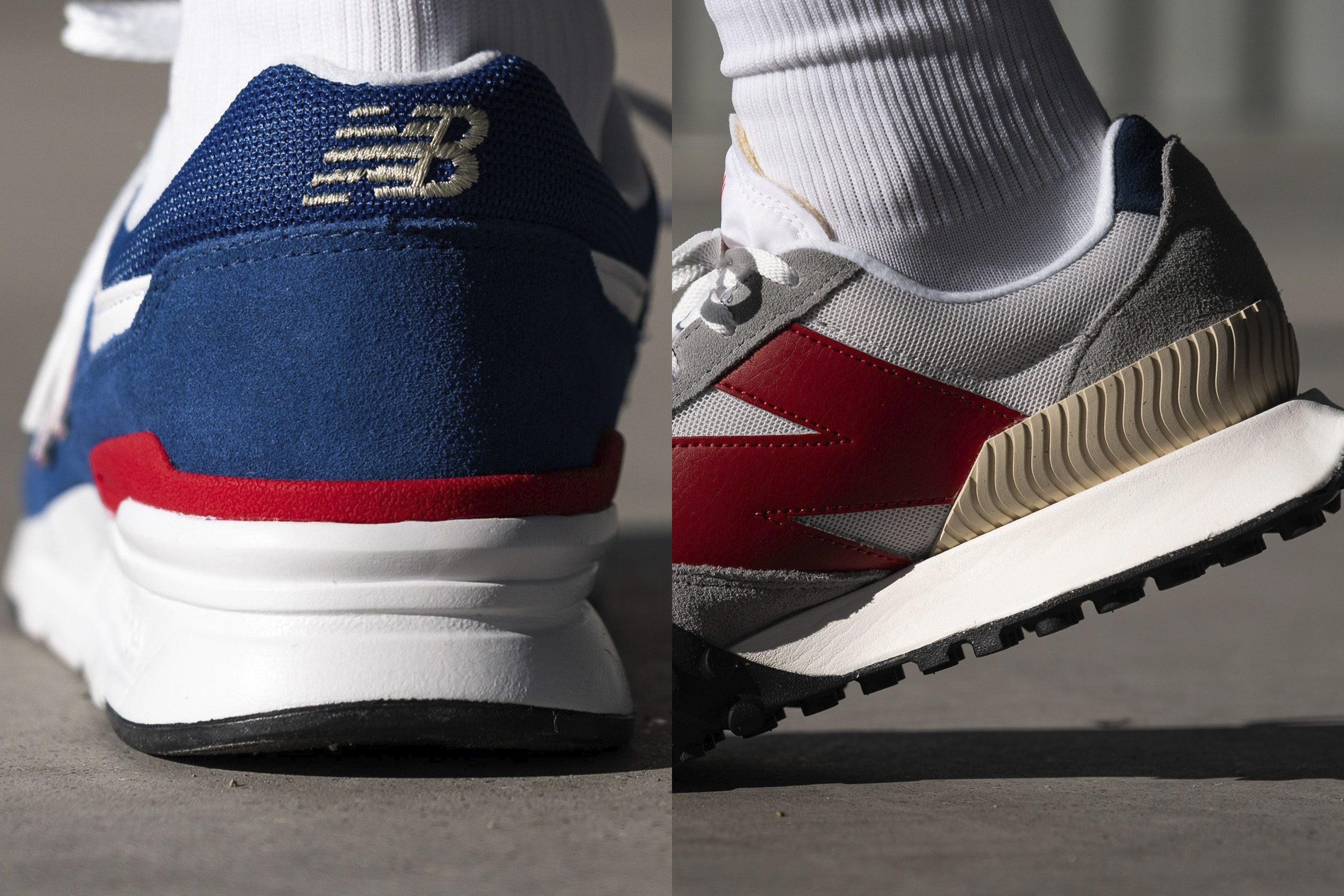
We don’t have a lab test for this one, they are easy to notice just by looking at the sneakers and they are the most noticeable when we try to slide off the platform (lateral stability test).
5. Structured upper
There are flimsy uppers and then there are sturdy uppers. The latter have more structure thanks to overlays that are not there for decorative reasons only. They are made of dense or stiff materials, like suede, leather, or even plastic.
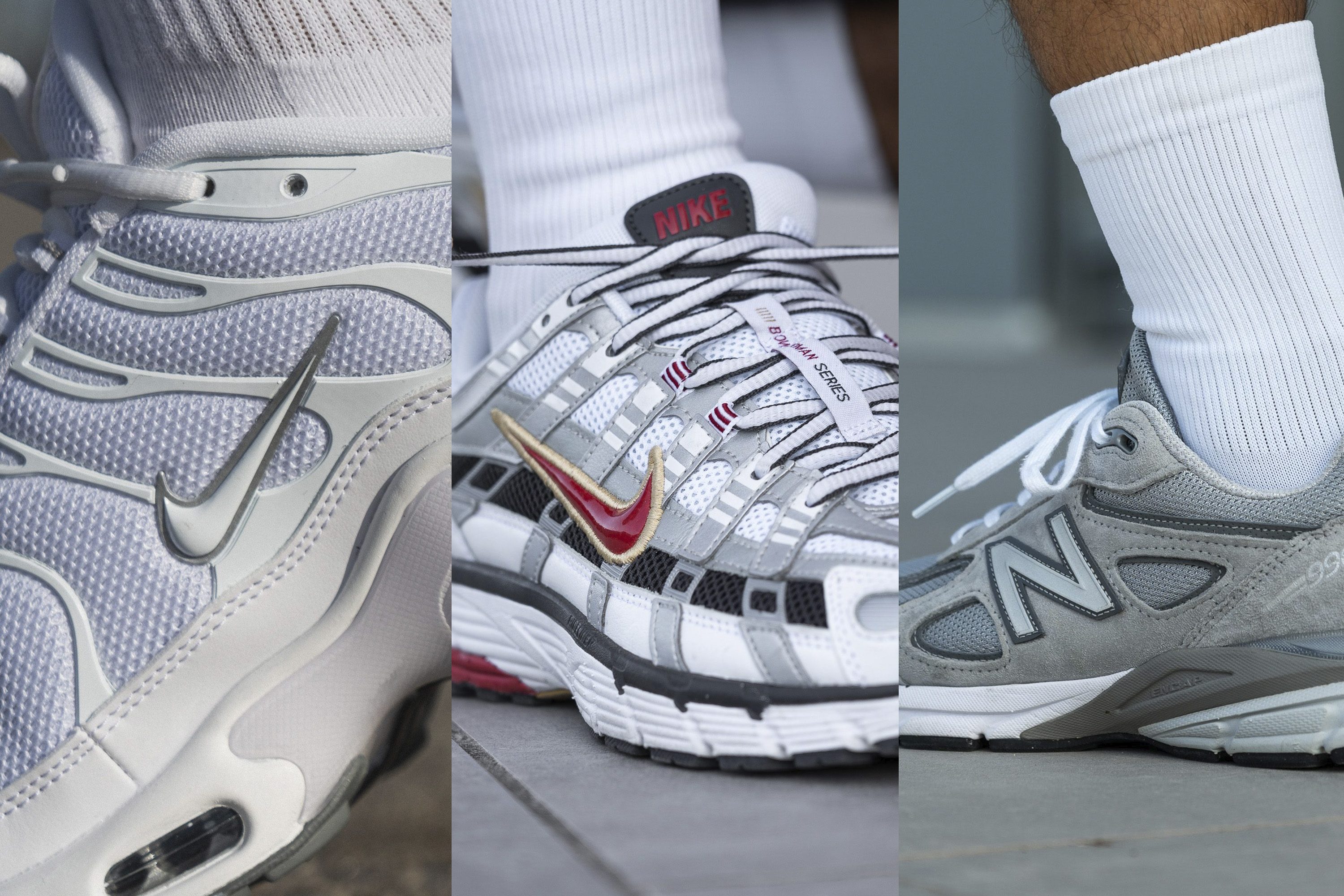
These uppers provide more support for the feet and improve the lockdown. With this approach, your feet have little or no room to wobble or slide from one side to another, and that’s exactly what we’re going for when we have flat feet.
Shock absorption of sneakers for flat feet
Flat feet can be painful or painfree. But the priority is always the same: find stable comfortable sneakers. We'd like to add to this: find sneakers that won't cause foot pain or fatigue prematurely. One important factor we need to cover for this purpose is shock absorption.
Testing the shock absorption of sneakers for flat feet
Sneakers with good shock absorption have midsoles that are great at dampening the impact. On the other had, sneakers with bad shock absorption make our legs deal with more stress because the midsole can't do it well. This feature is especially important if you're hitting high daily-step goals or if you're a heavier person.
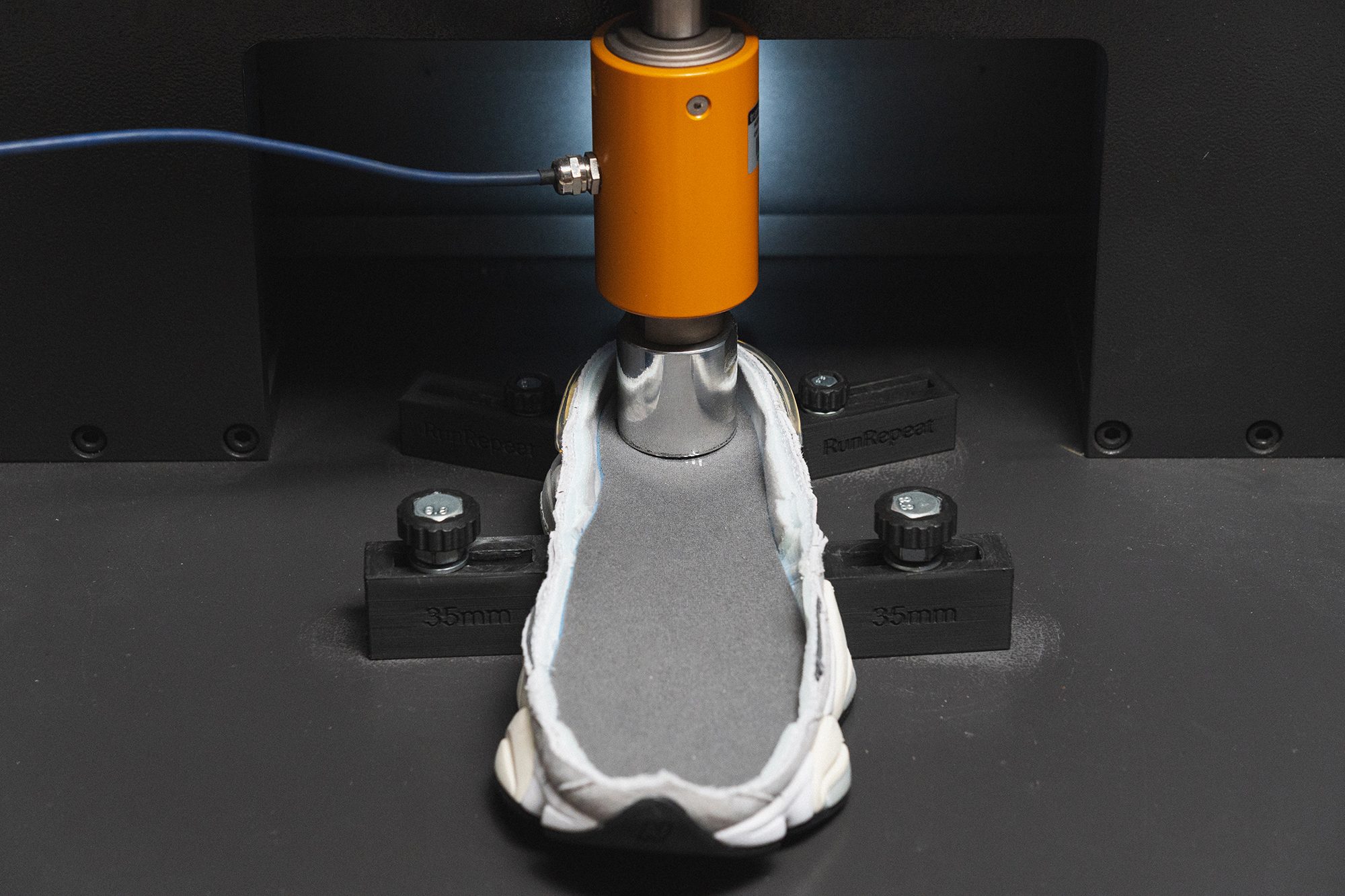
The result of this test (which we do following the SATRA TM144 methodology) is given in SA. The higher the number, the better the shock absorption, and that's exactly what we're looking for. In the world of sneakers, shock absorption below 80 SA is considered low. Look for anything above that number.
Breathability of sneakers for flat feet
As with any other footwear, the breathability of sneakers for flat feet depends on the upper material and the design. By design, we mean whether the ventilation holes are real or for decorative purposes only.
Assessing the breathability on a 1-5 scale, where 1 is the least breathable and 5 the most breathable
We test the breathability of sneakers by pumping smoke into the toebox. Based on how much of that smoke comes out and at which pace, we assign each sneaker a 1-5 rating.
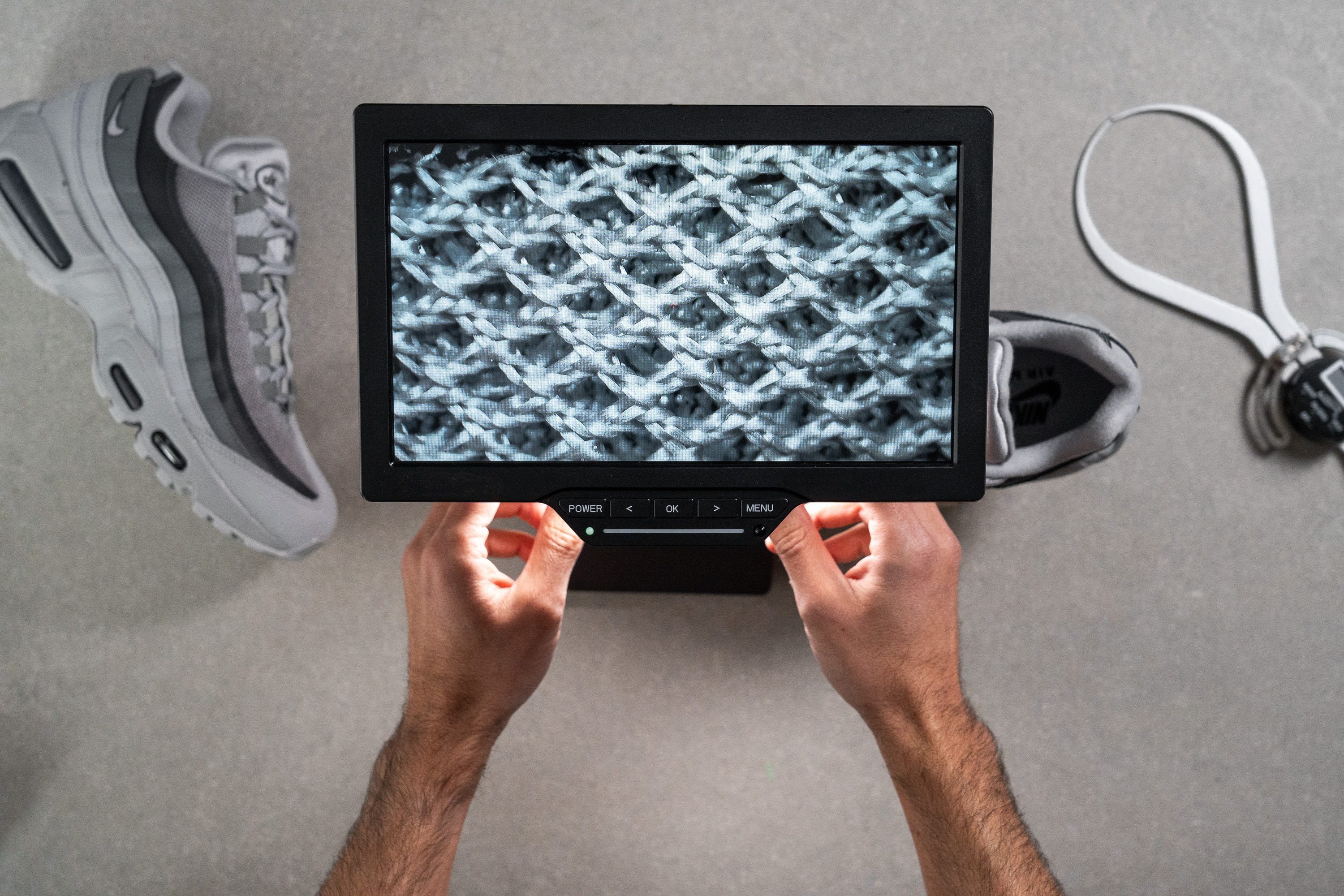
Then, we look at the upper under the microscope, to get a more in-depth knowledge of what’s happening.


Sneakers that we rated with 1/5 are perfect for cold weather as they trap all the heat inside. Those that scored the highest are as breezy as it gets, so we recommend using them in very hot weather. Everything in between can be worn in spring and autumn, you can simply adjust by changing the socks from thicker to thinner.
You may also want to look at the tongue thickness if you really prioritize breathability because some sneakers have very thick tongues and, although they prevent lace bites, they do make the sneakers less breathable.
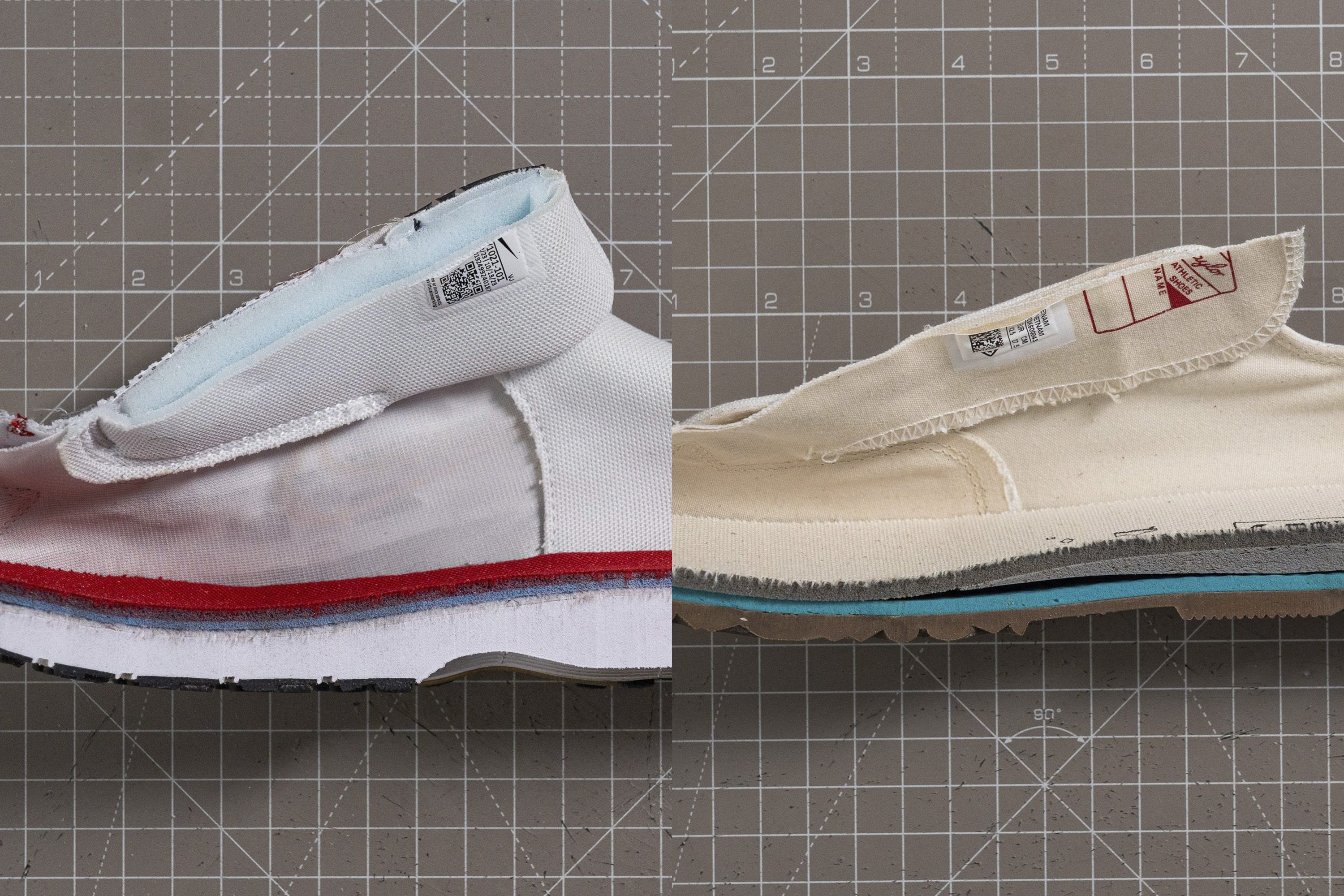
Thinner tongues are lighter and more sock-like, if that’s what you’re after. Thicker tongues, though, help with the overall lockdown, especially when combined with overlays that add structure to the upper. We recommend this combo to people with flat feet.
Weight of sneakers for flat feet
Some stabilizing technologies that we find in sneakers for flat feet may weigh more because it’s just adding to the sneakers, not taking out. Sneakers with more padding weigh more than those without.
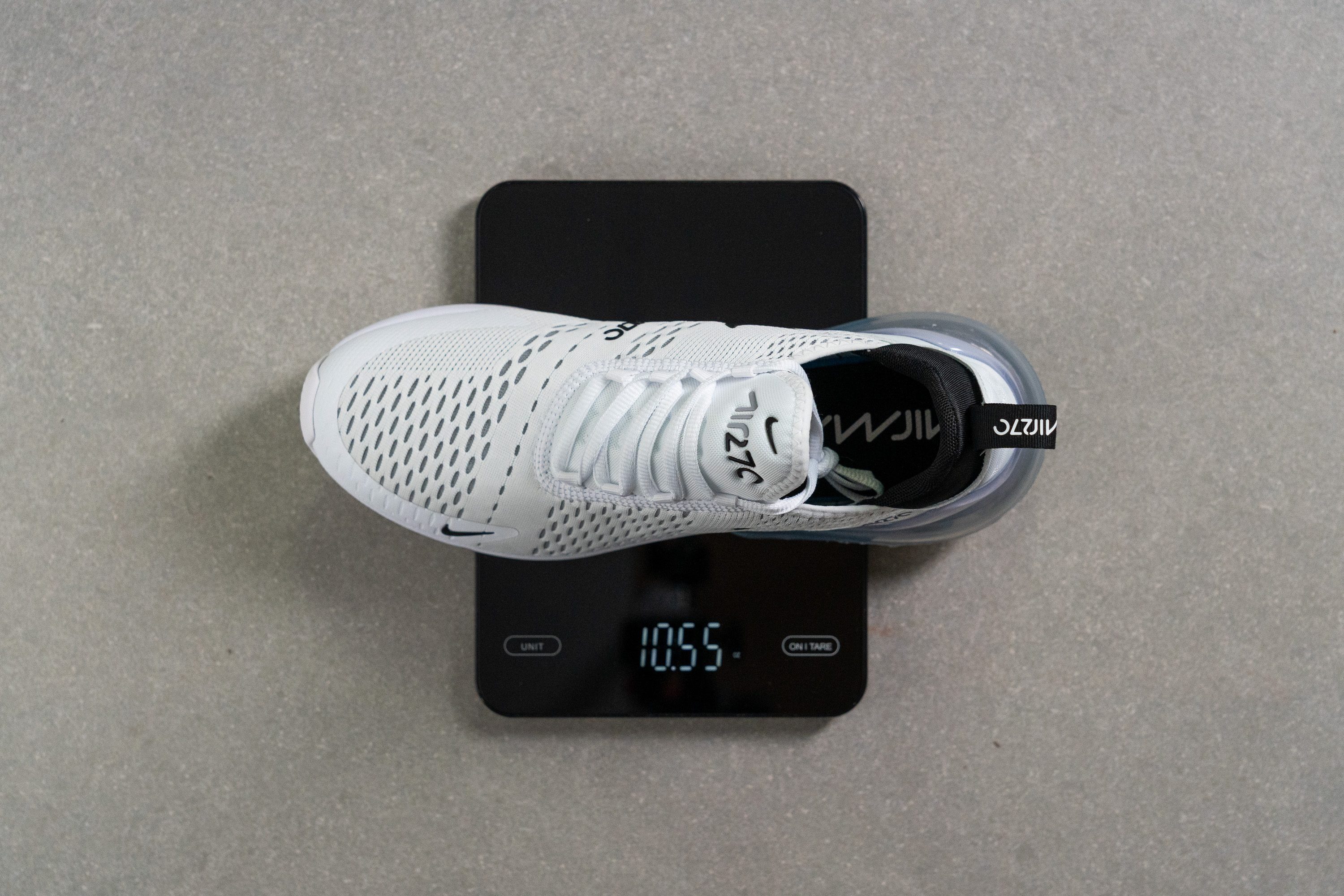
For context, we can look at the average weights of sneakers:
- Average weight of sneakers: 13.8 oz or 391g
- Average weight of sneakers for flat feet: 14.4 oz or 408g
- Average weight of sneakers, excluding those for flat feet: 13.7 oz 388g
Of course, it’s best to look for sneakers that are as light as possible, but the weight is the price we pay when we also want more cushioning, thick tongues, thick insoles, and so on. It’s all about the balance!
Toebox width for flat feet: lab data
Just because you have flat feet does not mean your toes should fight for life in a toebox that’s too tight or too wide. Here’s how to find what works for you: look at the lab data. We get the lab data from our gel molds. It’s the perfect way to measure the internal space as the gel fills the toebox entirely. We freeze it and get a gel mold of each sneaker we test.
Pouring the gel and freezing it allows us to take measurements of the gel mold. This is super important because we can’t just fit a laser or a caliper into the toebox to take measurements.
Once the gel has set, we measure the width of the toebox at the big toe and the width of the shoe where it’s the widest. The big-toe measurement tells us how wide the toebox is. The widest part tells us how wide the shoe is, overall.
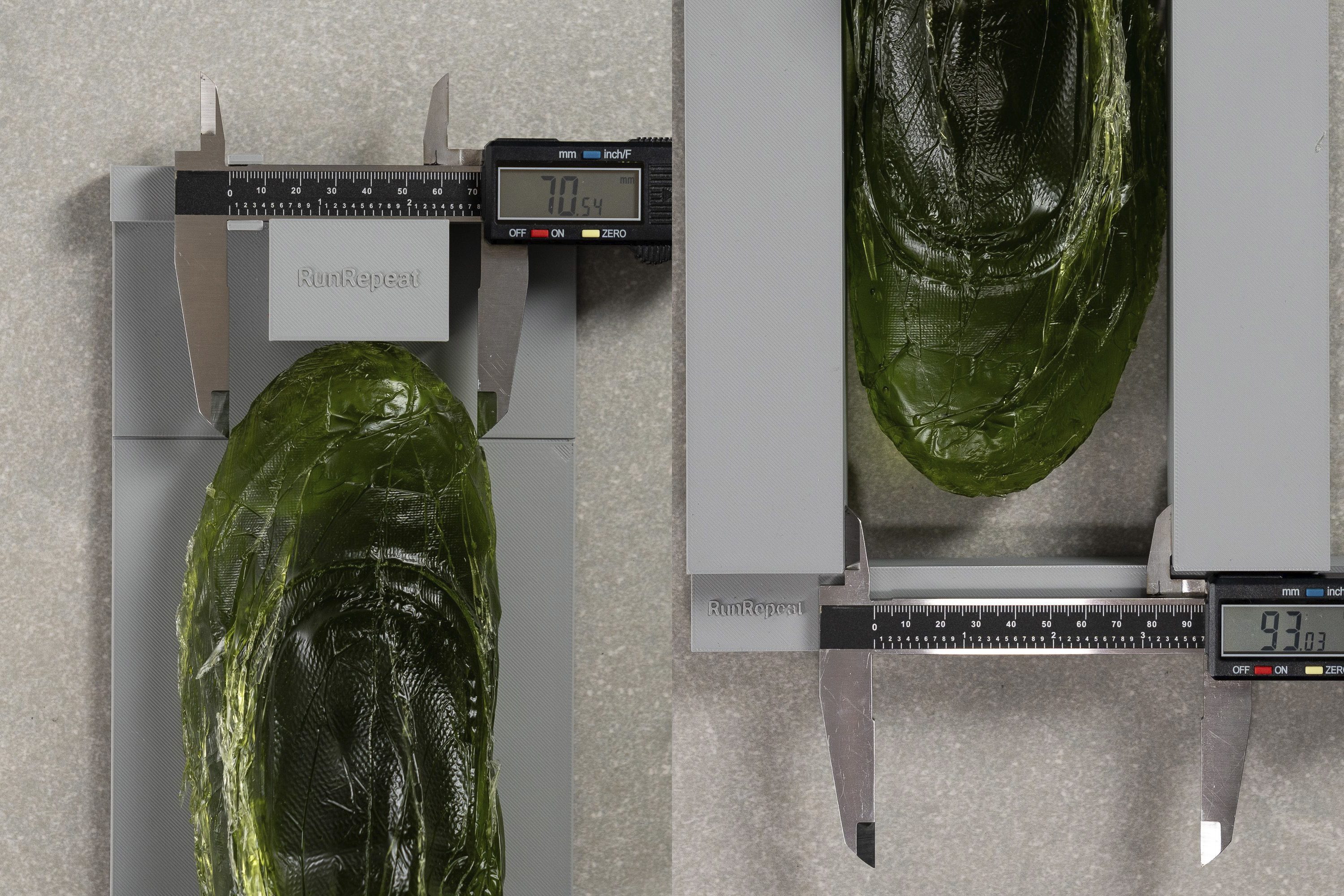
However, knowing both is great because we can conclude how pointy the toebox is. The bigger the difference between the 2 numbers, the more tapered the toebox!
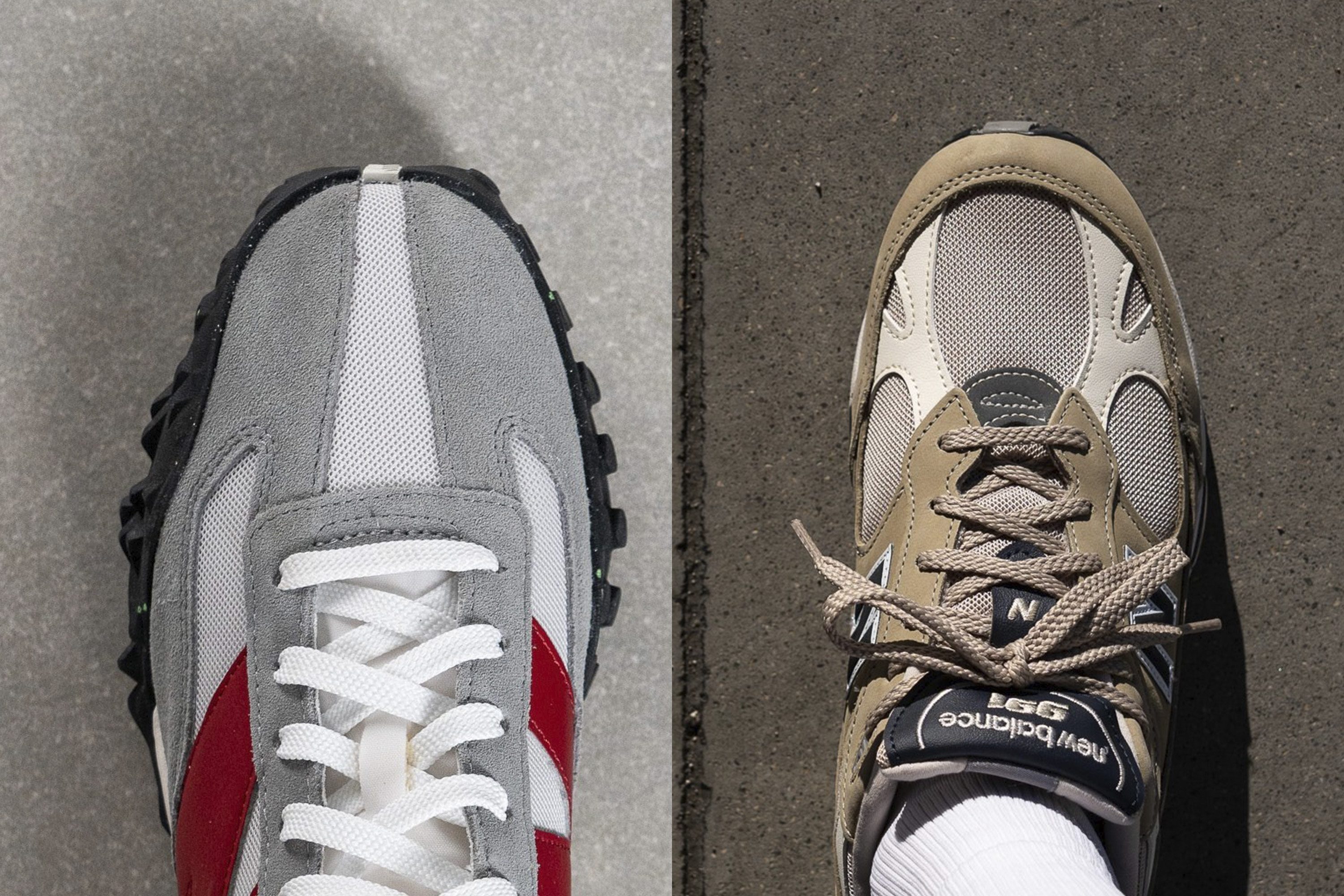
How expensive are sneakers for flat feet
Sneakers for flat feet are $17 more expensive on average than the sneakers for medium/high arches. The average price of sneakers for flat feet is $130, while those not for flat feet average at $113.
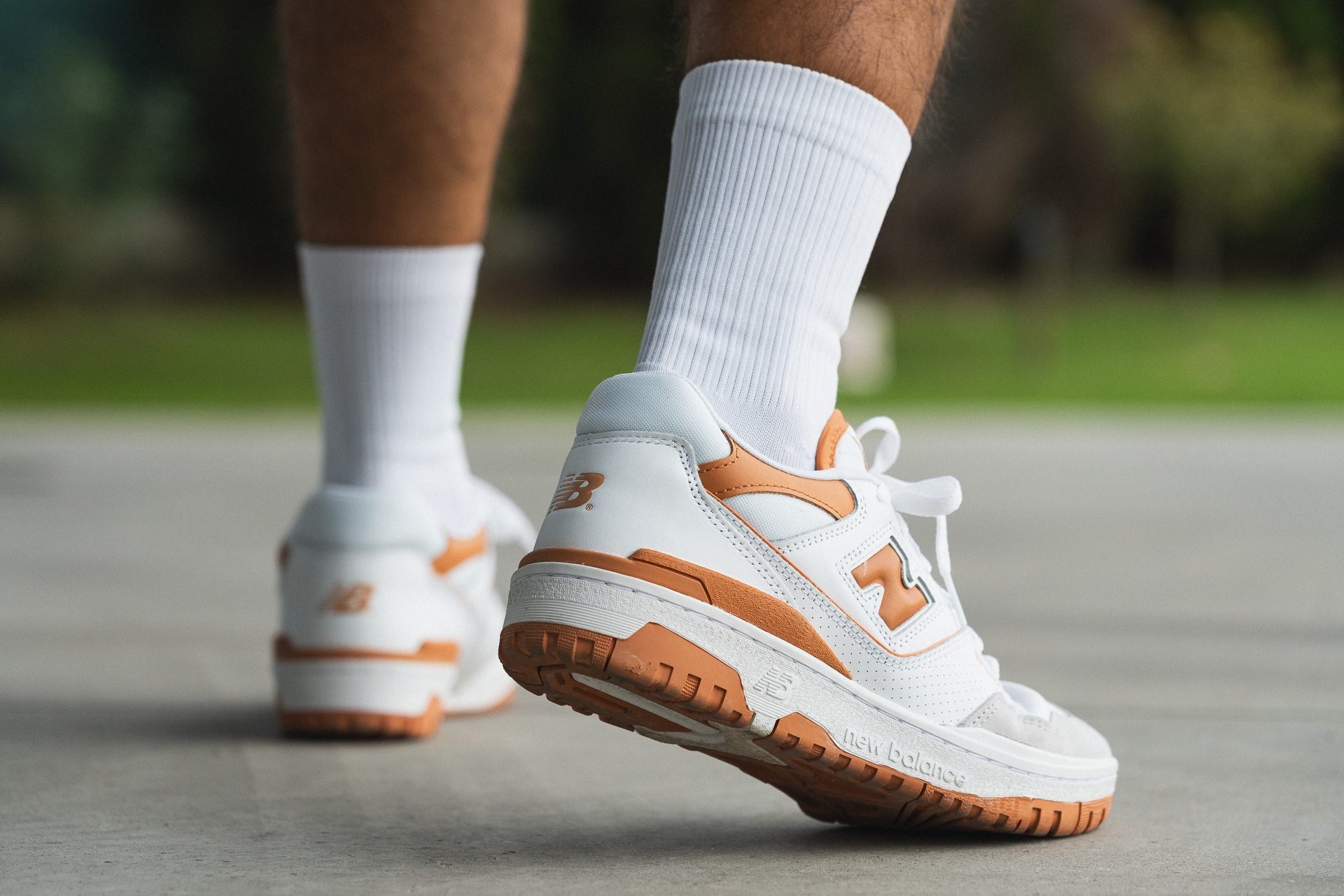
Keep in mind that MSRP in the table below is the manufacturer’s suggested retail price or how much the sneaker costs once it is released. Many of these are and/or can be heavily discounted!
Painful flat feet deserve more attention
If your feet hurt often, even after a shorter walk, this is a sign to schedule an appointment with a specialist, like a podiatrist. It’s important to understand where the pain is coming from and what can be done: diagnosis and rehab.
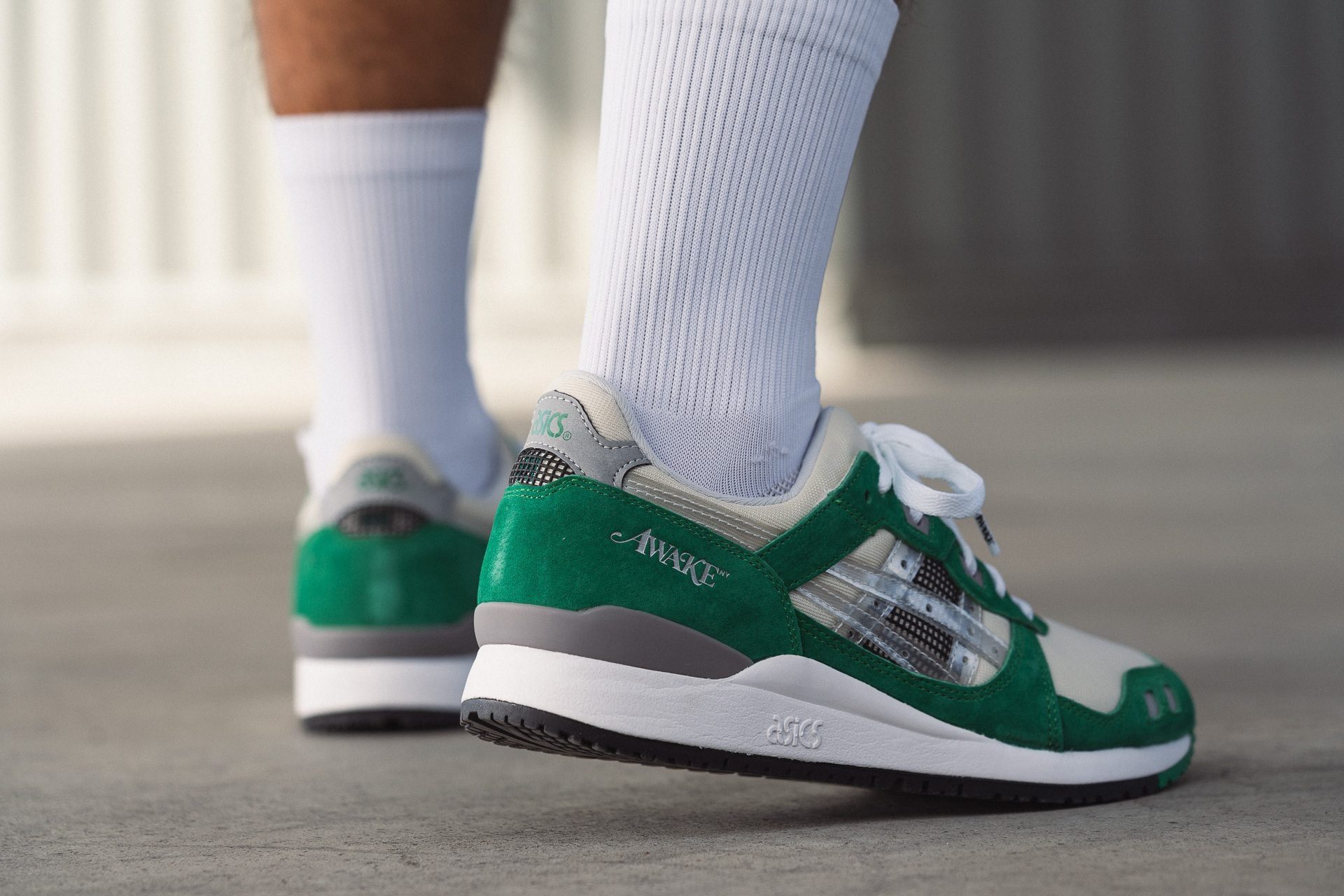
In some cases, inserts prescribed by a specalist can help, while in other cases physiotherapy may be needed. It’s best to be proactive and address this sooner rather than later, so that the pain does not become chronic or so that a new injury does not appear.

